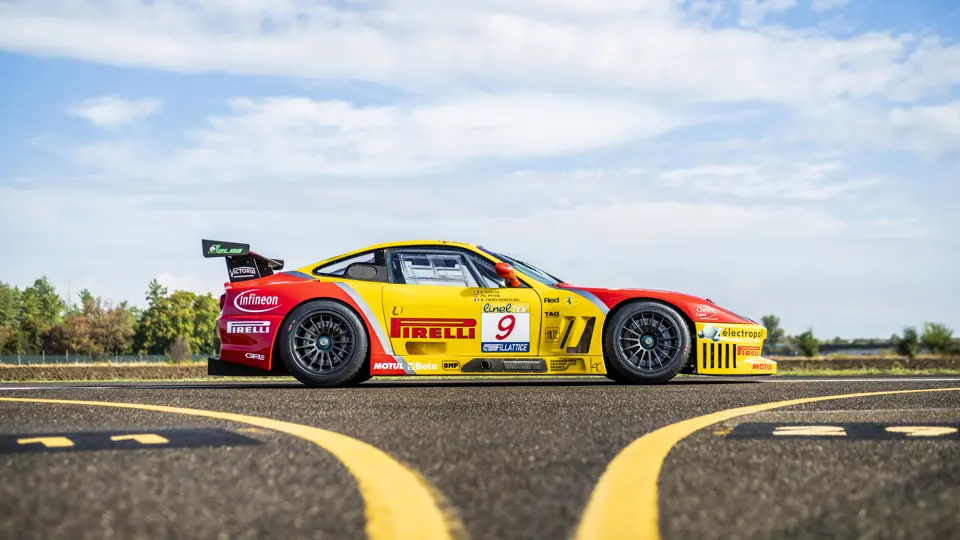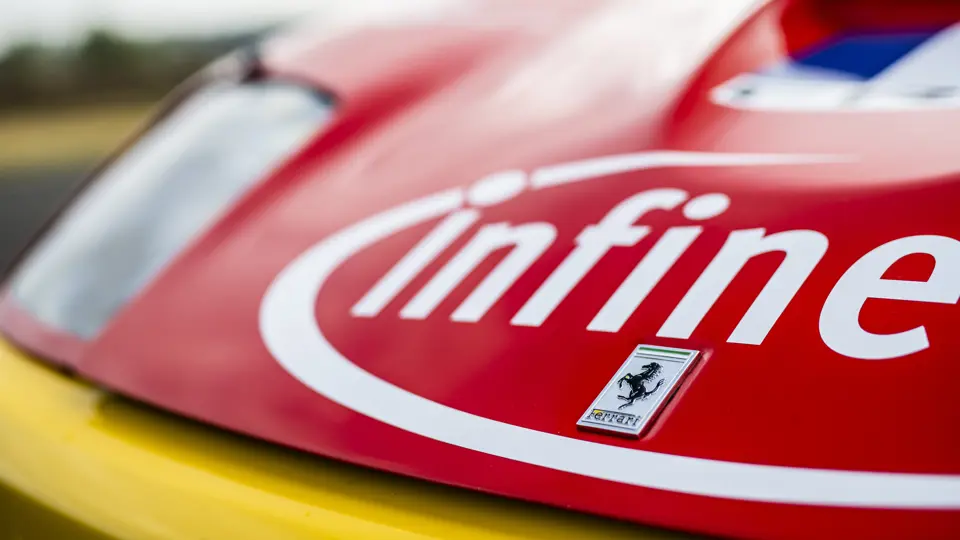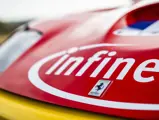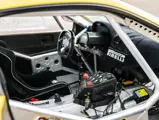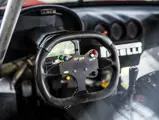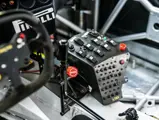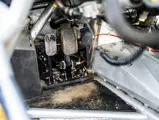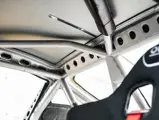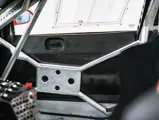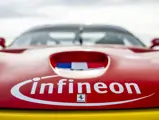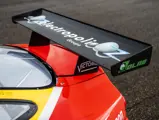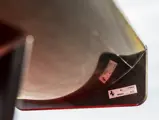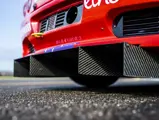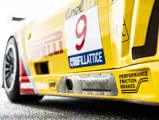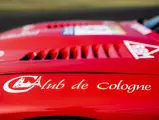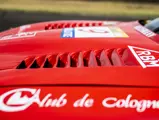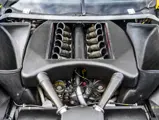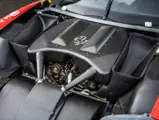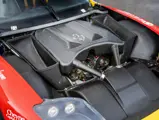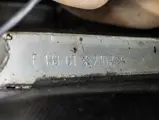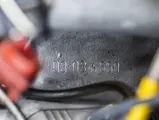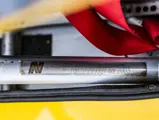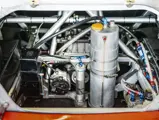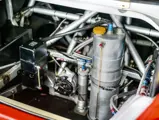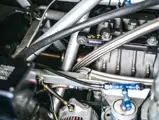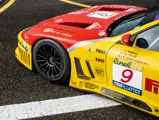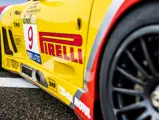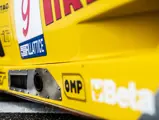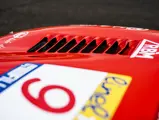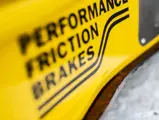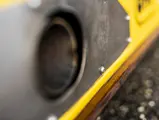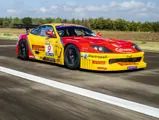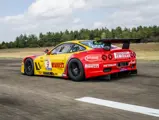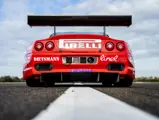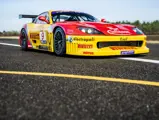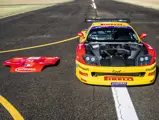
2003 Ferrari 550 GTC
{{lr.item.text}}
€2,000,000 - €2,500,000 EUR | Not Sold
{{bidding.lot.reserveStatusFormatted}}
- Received Ferrari Classiche “Red Book” certification in March 2021
- The first “even chassis number” V-12 race car built by Ferrari since the 512 M
- One of two 550 GTC race cars officially commissioned by Ferrari
- Fielded in the 2003 FIA GT Championship
- Phenomenally successful in the Italian Speed Hill Climb Championship, winning the GTM category in 2005, 2006 and 2014 and the 2006 Trofeo Nazionale Costruttori for Ferrari
- A reçu son "Livre Rouge" de certification Ferrari Classiche en mars 2021
- Depuis la 512 M, première Ferrari de course à moteur V12 dotée par le constructeur d'un numéro de châssis pair
- Seulement deux exemplaires de 550 GTC de compétition officiellement réalisés par Ferrari
- Engagée au Championnat FIA GT 2003
- Succès spectaculaire au Championnat d'Italie de la Montagne, avec le titre en catégorie GTM en 2005, 2006 et 2014, et en 2006 le Trofeo Nazionale Costruttori pour Ferrari
Ferrari’s front-engine 550 platform was an unlikely motorsport success story, but a small number were developed by privateers for GT1 class racing to great acclaim. The better-known examples were the Prodrive-manufactured “550 GT1”, among the most successful GT race cars of the era; winning twice overall in the 2001 FIA GT Championship, finishing 1st in the GTS Class at the 2003 24 Hours of Le Mans and an overall win at the 2004 24 Hours of Spa.
The first factory-built example—developed in a technical partnership between Ferrari and N-Technology—was coined the 550 GTC. Construction began in 2003, coincidentally after Ferrari had phased out production of the road-going 550 and replaced it with the 575. Only two examples were manufactured: chassis numbers 2102—offered for sale here—and 2104, both delivered new to be raced by the works-favoured French team, JMB Racing, though still in the ownership of Ferrari. The chassis number “2102” marked the first time since the 512 M that a model had used an even chassis number for a V-12 race car—a tradition reserved for use on factory race cars only.
Sporting a Rosso Corsa exterior over Tessuto Racing Nero interior, this 550 GTC debuted in the LG Super Racing Weekend at Donington Park on 29 June 2003, and raced twice more in the 2003 FIA GT Championship. It next raced at the 24 Hours of Spa, on 27 July 2003, piloted by Fabio Babini, Philip Peter and Boris Derichebourg. They qualified in 10th place and Spa put this 550 GTC to the ultimate test as it competed against three Prodrive Ferrari 550s, Chrysler-backed Dodge Vipers and Saleen SR7s. During the first six hours, chassis number 2102 held 1st position, a fine attestation to its race pace. After 326 laps, the car sadly retired due to engine trouble, but had more than proved its point. The official 550 GTC program had thus served its purpose as an operational prototype (for the subsequent 575 GTC) and reignited Ferrari’s enthusiasm for GT racing, which they have remained committed to and been dominant since.
In 2004, chassis number 2102 was placed in storage with AF Corse, and in 2005, was sold to its second owner, Piero Nappi, a favoured friend of the marque and a significant Italian privateer racer. Nappi fielded chassis number 2102 in a dozen races during the 2005 Campionato Italiano Velocità Montagna (CIVM)—or Italian Speed Hill Climb Championship—becoming the overall “GTM” class champion. Nappi’s success was repeated in 2006 and 2014. A letter dated 26 September 2005 from Jean Todt, then Director General of Ferrari, congratulates Nappi on his victory and notes that it had been several years since any Ferrari had been successful in this category. Nappi continued to enter the car in CIVM events until 2016, achieving around 30 class and group wins.
In March 2016, the engine was rebuilt by Autotecnica Motori. Nappi sold the Ferrari in early 2017, sending the car to its third and current owner who is said to have commissioned a sympathetic cosmetic restoration, returning the car to its 24 Hours of Spa livery. In December 2017, the transaxle was rebuilt by Riverside Performance Engineering. The Ferrari is believed to retain its period correct Magneti Marelli ECU, and the 550 GTC was subject to a three-day intensive 3D scan to micron accuracy by Dafyd Richards of Redesign Sport, allowing for the re-engineering of key components if required. The seats and belts remain valid until the end of 2022, while it is advised that a new fuel cell, crack testing and the professional overview of a suitable team would be required prior to racing. The Ferrari is offered for sale with assorted spare wheels and tyres, and various spare panels.
This extraordinary 550 GTC represents a fascinating and critical turning point in the GT racing history of Ferrari and the “Red Book” certification—issued in March 2021—serves as the finest of compliments.
Il était peu probable que la Ferrari 550 à moteur avant se pare d'une prestigieuse histoire en compétition, mais quelques exemplaires ont tout de même été préparés par des pilotes privés pour courir en catégorie GT1, avec grand succès. Les plus connues étaient les "550 GT1" réalisées par Prodrive, qui ont fait partie des meilleures GT de leur époque ; elles ont remporté deux victoires au classement général lors du Championnat FIA GT 2001, une victoire en catégorie GTS aux 24 Heures du Mans 2003 et une victoire au classement général des 24 Heures de Spa 2004.
Le premier exemplaire produit par l'usine — mis au point dans le cadre d'un partenariat technique entre Ferrari et N-Technology — a été dénommé 550 GTC. La fabrication a commencé au moment où Ferrari a mis un terme à la production de la 550 de route, remplacée par la 575. Seuls deux exemplaires ont vu le jour : portant les numéros de châssis 2102 (la voiture de la vente) et 2104, ils ont été livrés neufs à l'équipe française JMB Racing, une entité appréciée par l'usine, tout en restant la propriété du constructeur de Maranello. Avec le numéro de châssis 2102, c'était la première fois depuis la 512 M qu'un modèle recevait un numéro pair pour une version course à moteur V12 — une tradition réservée uniquement aux machines de course usine.
De teinte Rosso Corsa avec un intérieur Tessuto Racing Nero, cette 550 GTC a fait ses débuts le 29 juin 2003 lors du LG Super Racing Weekend à Donington Park, et a couru encore deux fois dans le cadre du Championnat FIA GT 2003. Elle a pris part le 27 juillet 2003 aux 24 Heures de Spa entre les mains de Fabio Babini, Philip Peter et Boris Derichebourg. L'équipage s'est qualifié en dixième position, sachant que cette course constituait pour cette 550 GTC une épreuve de vérité car elle se mesurait à trois Ferrari 550 Prodrive, des Doge Viper soutenues par Chrysler et des Saleen SR7. Pendant les six premières heures, la 550 GTC châssis 2102 a occupé la première position, ce qui a mis en valeur ses qualités dynamiques. Malheureusement, des problèmes moteur l'ont contrainte à l'abandon au 326e tour, mais elle avait largement prouvé son excellente aptitude à la compétition. Le programme 550 GTC officiel avait atteint son objectif en tant que prototype opérationnel (pour la 575 GTC qui allait suivre), tout en redonnant à Ferrari la passion de la compétition GT, catégorie dans laquelle le constructeur allait désormais rester impliqué au plus haut niveau.
En 2004, la 550 GTC châssis 2102 a été entreposée chez AF Corse et, en 2005, elle a été vendue à son deuxième propriétaire, Piero Nappi, ami de la marque et pilote privé italien de premier plan. Nappi a engagé la 550 GTC dans une douzaine d'épreuves du Campionato Italiano Velocità Montagna (CIVM) 2005 — Championnat d'Italie de la Montagne — dont elle a décroché le titre en catégorie "GTM". Nappi a réitéré son exploit avec les titres 2006 et 2014. Un courrier daté du 26 septembre 2005 et signé Jean Todt, alors directeur général de Ferrari, félicite Nappi pour sa victoire et souligne que c'est la première fois depuis plusieurs années qu'une Ferrari, quelle qu'elle soit, remporte ce titre. Avec la 550 GTC, Nappi a continué à prendre part jusqu'en 2016 aux épreuves du CIVM, signant une trentaine de victoires de catégorie et de groupe.
En mars 2016 le moteur a été reconstruit par Autotecnica Motori. Nappi a vendu la voiture début 2017 à son troisième et actuel propriétaire, qui aurait fait faire une restauration cosmétique discrète pour que la voiture présente sa livrée des 24 Heures de Spa. En décembre 2017, la boîte-pont a été refaite par Riverside Performance Engineering, et il est probable que cette 550 GTC comporte son système de gestion moteur Magneti Marelli correct d'époque. Elle a fait l'objet d'un examen 3D effectué par Dafyd Richards, de Redesign Sport, à l'échelle du micromètre, pour vérifier l'éventuelle nécessité de refabriquer des pièces-clés. Les sièges et les harnais sont homologués jusqu'à fin 2022 mais, avant d'envisager de reprendre la compétition, il est conseillé de remplacer le réservoir de carburant, d'effectuer un contrôle de l'intégrité de la mécanique et de confier la voiture à une équipe adéquate pour une vérification professionnelle. La Ferrari est accompagnée de jantes et pneus de secours, et de divers panneaux de rechange.
Cette extraordinaire 550 GTC représente un tournant fascinant et déterminant dans l'histoire de Ferrari en compétition GT, et le "Livre Rouge" de certification (délivré en mars 2021) en constitue le plus beau compliment.




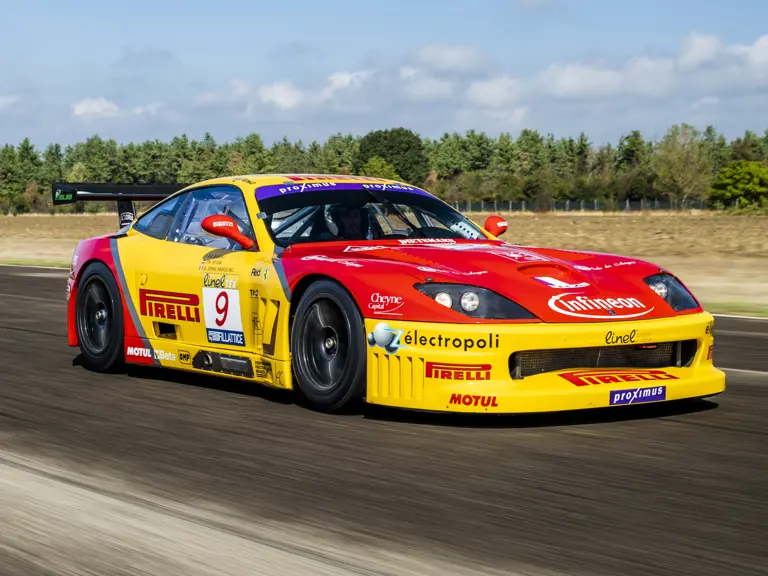
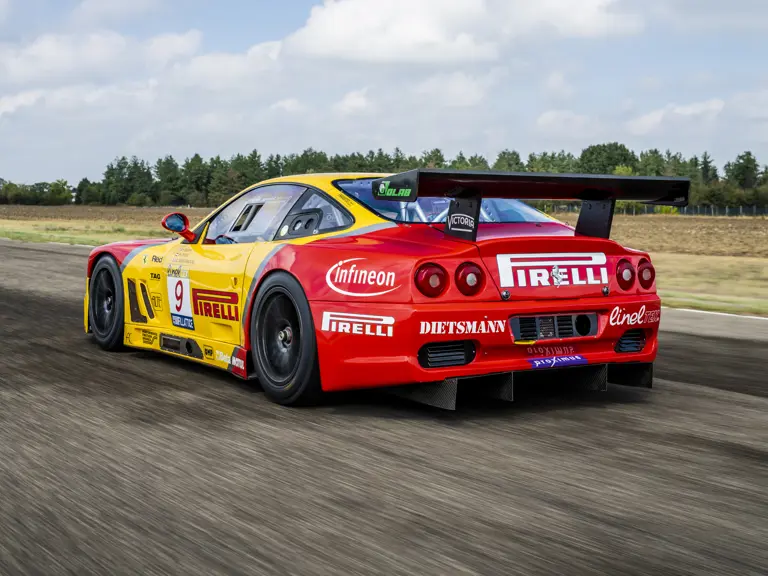
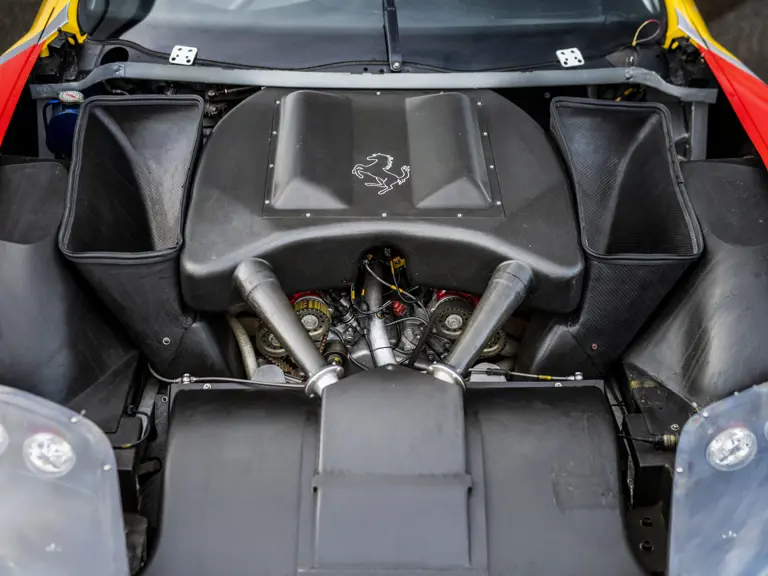
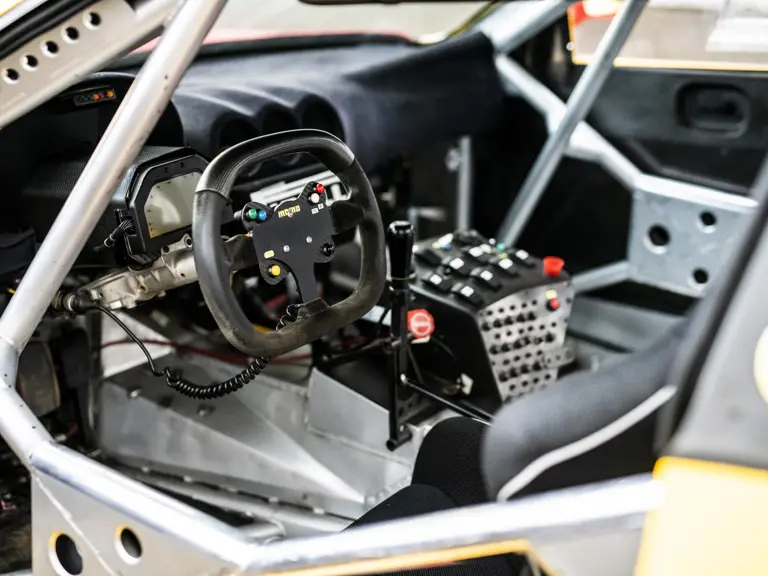
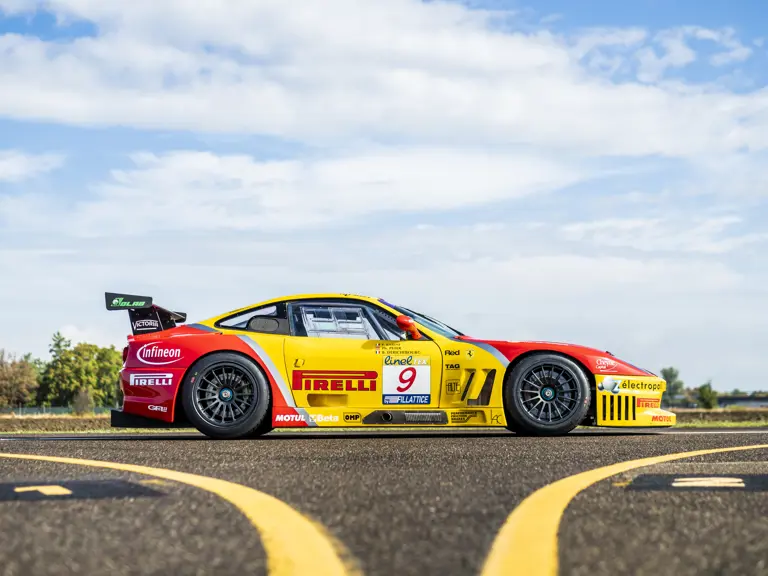
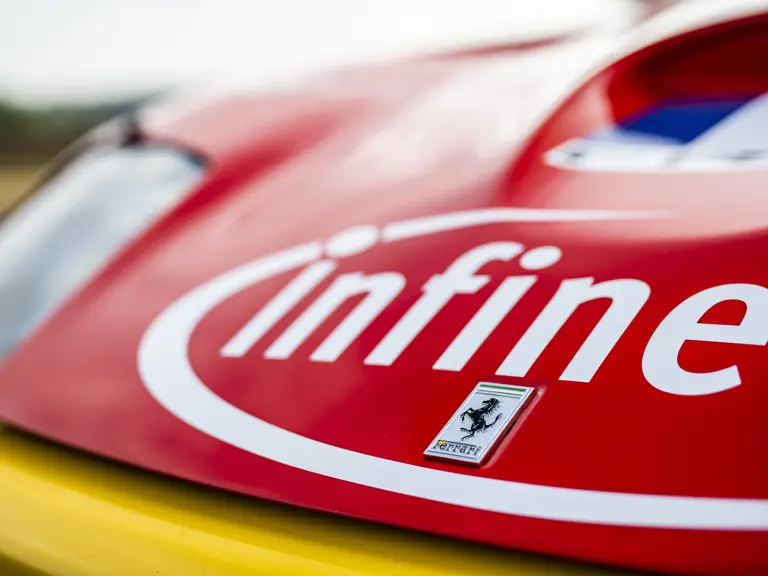
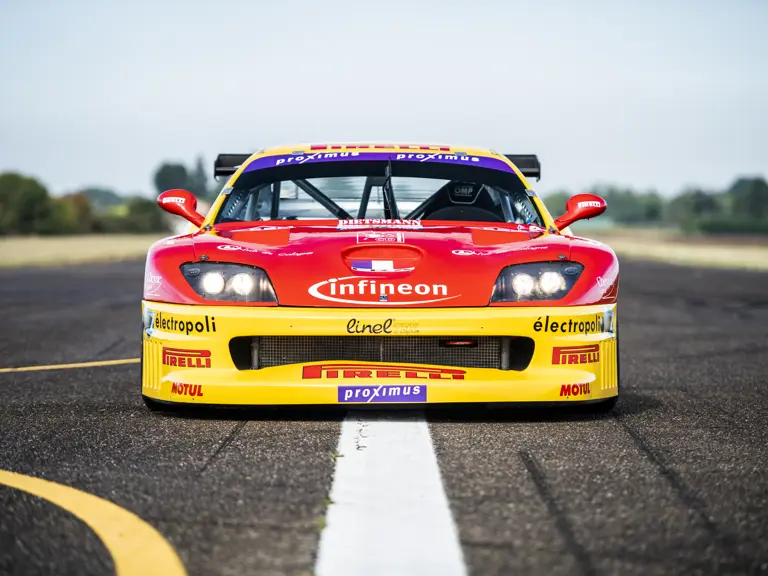
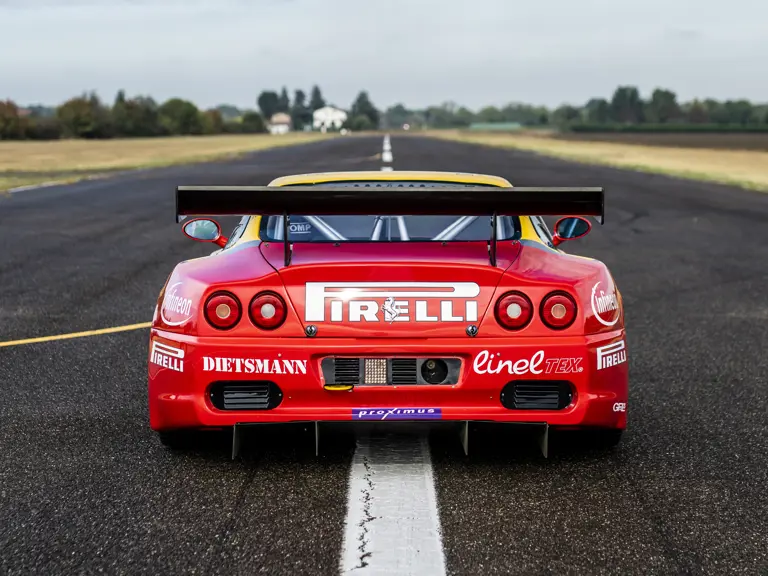
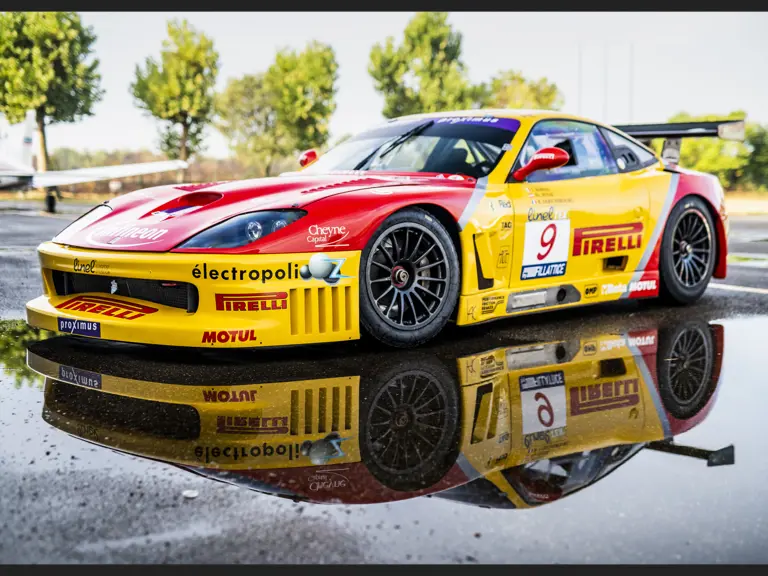
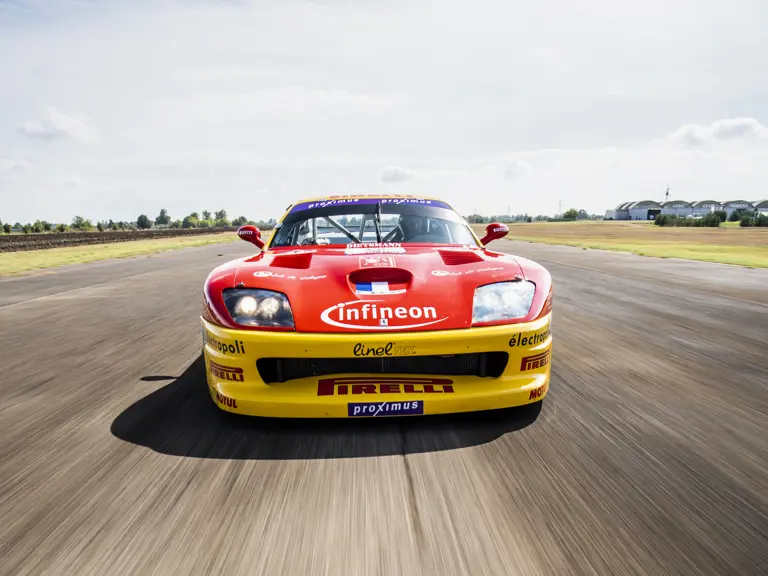
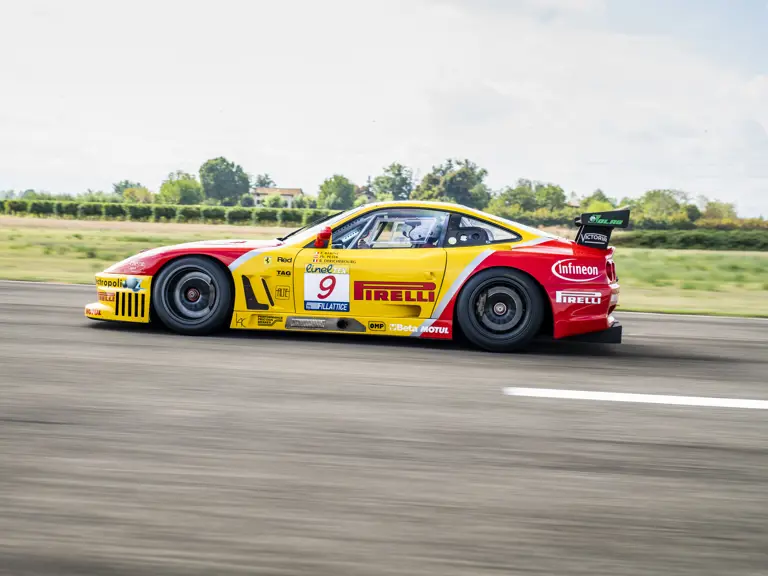
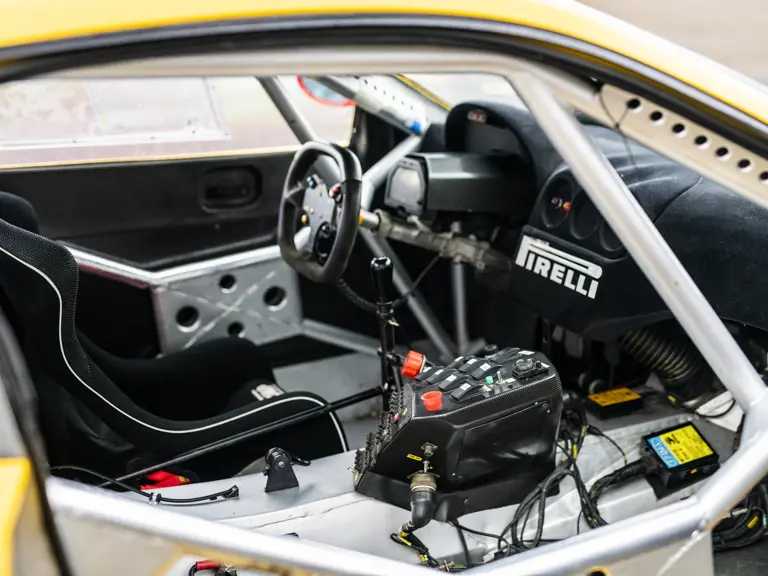
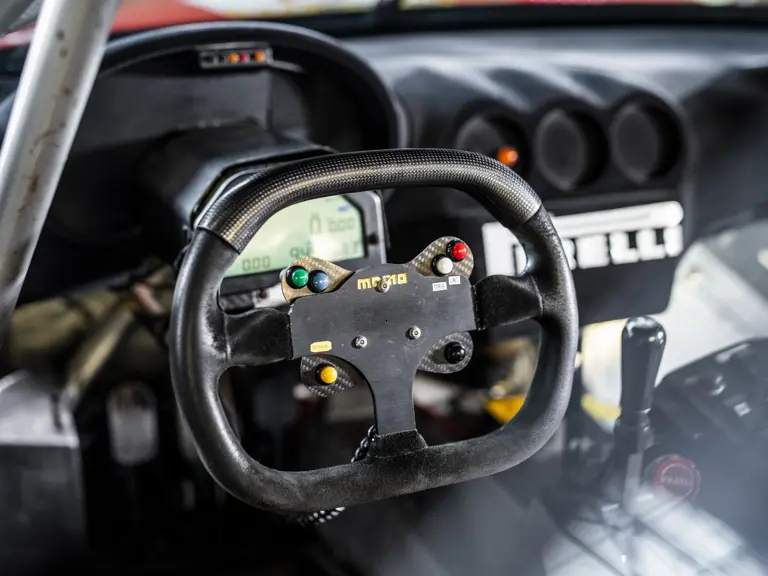
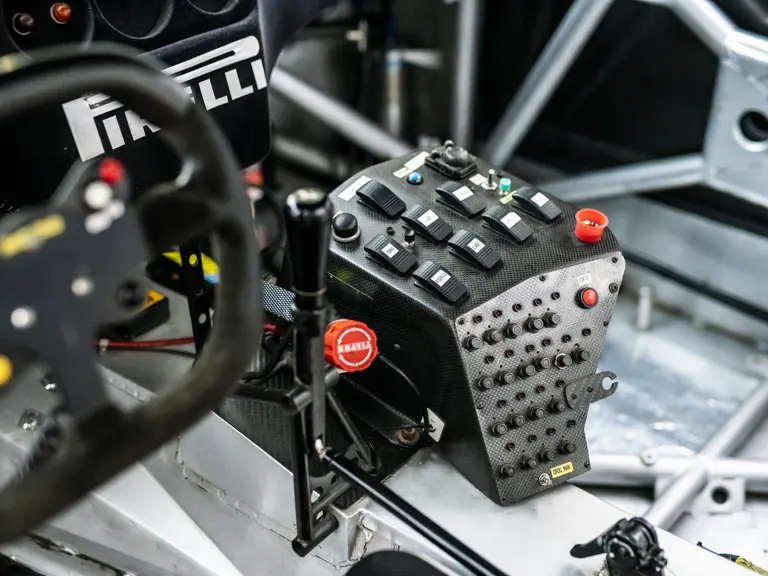
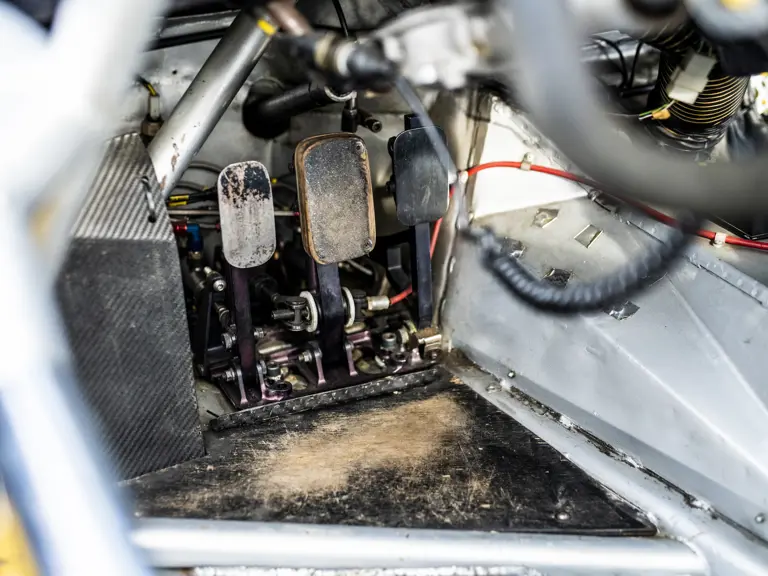
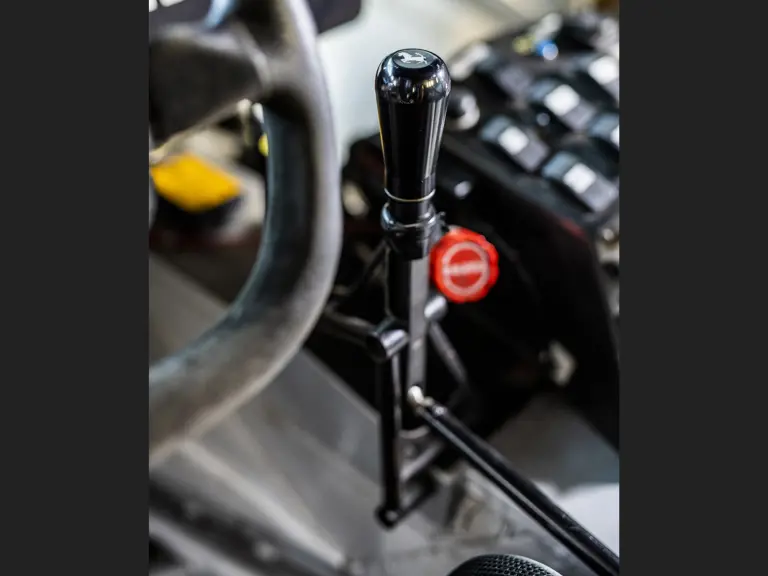
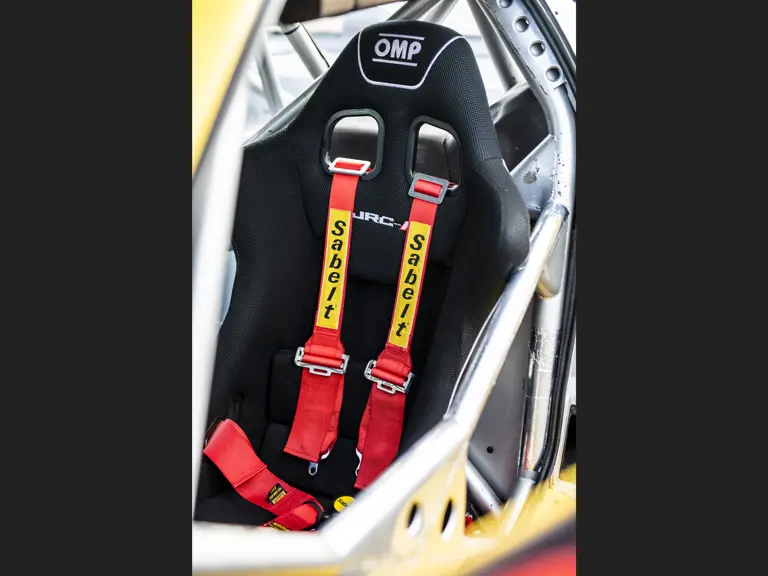
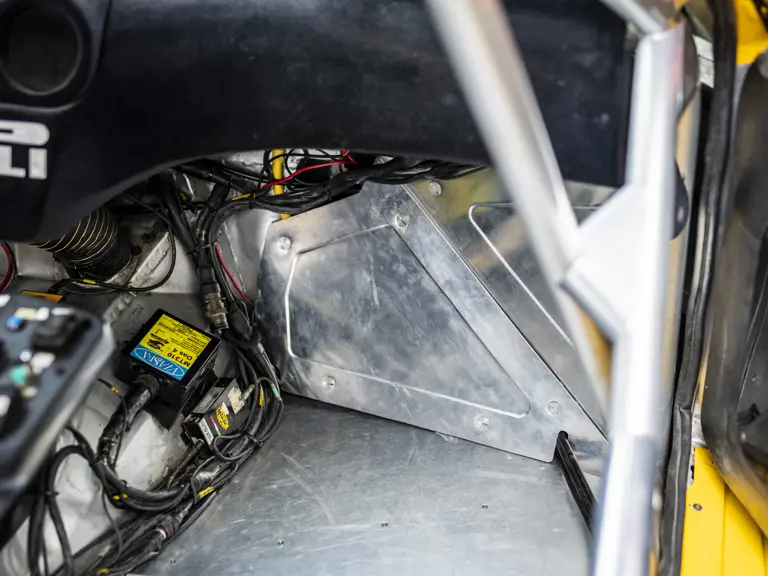
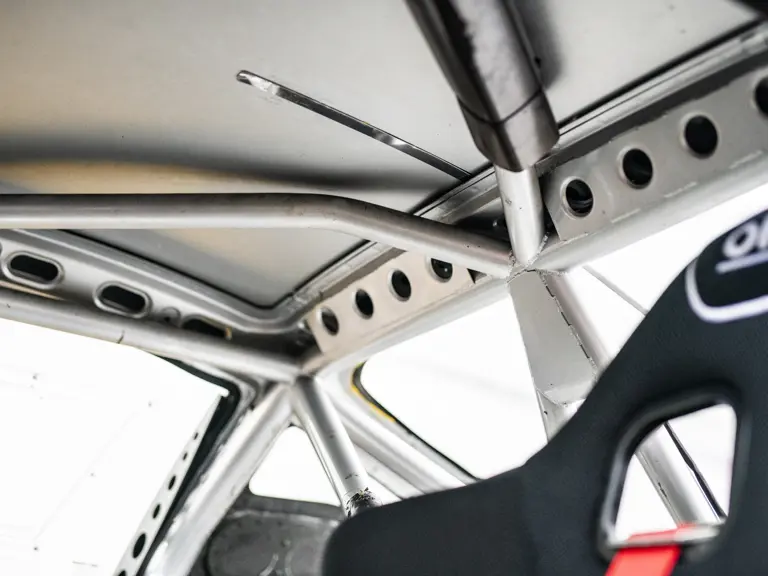
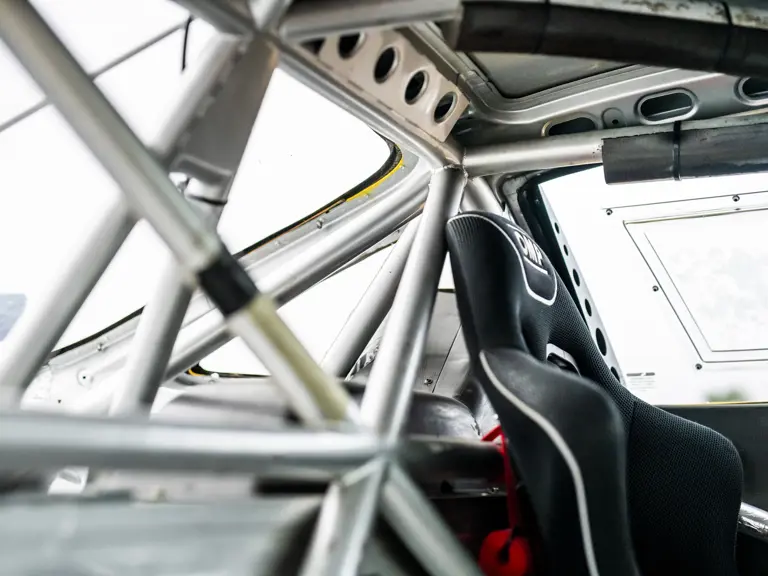
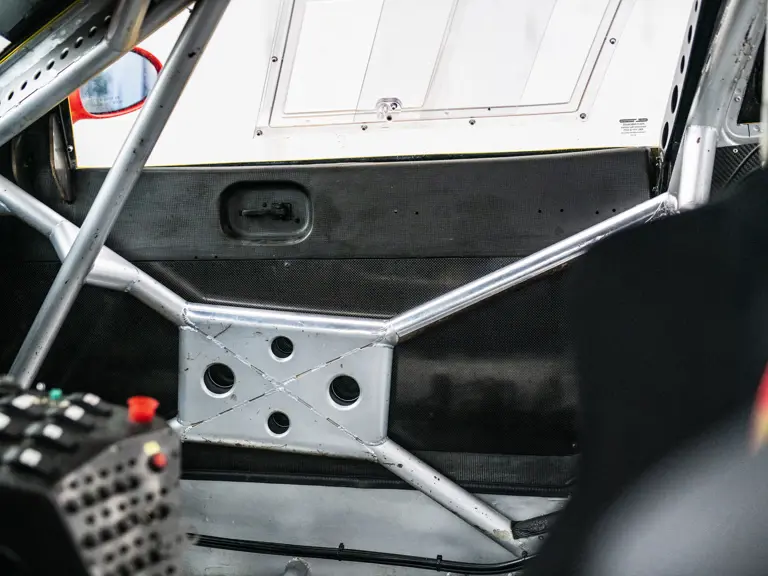
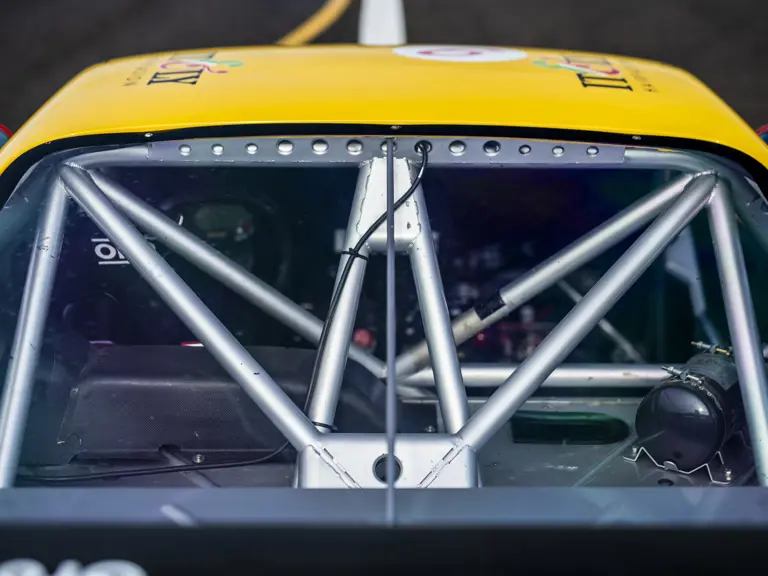

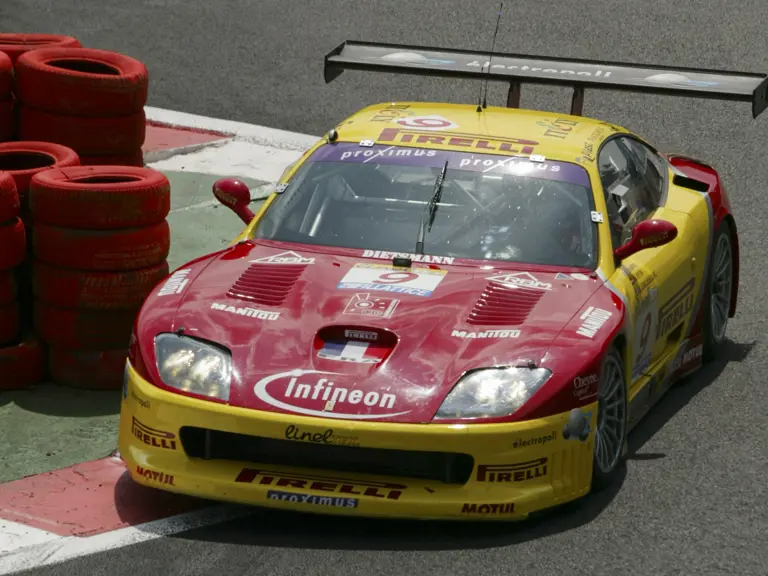
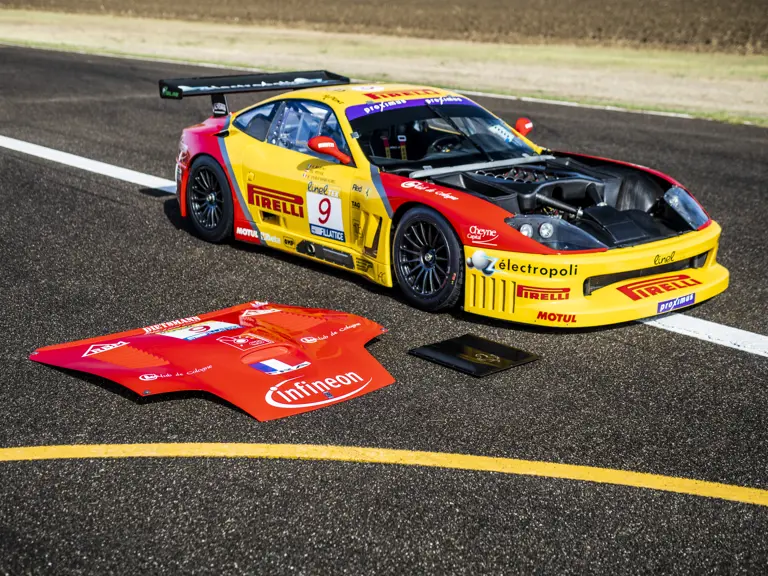
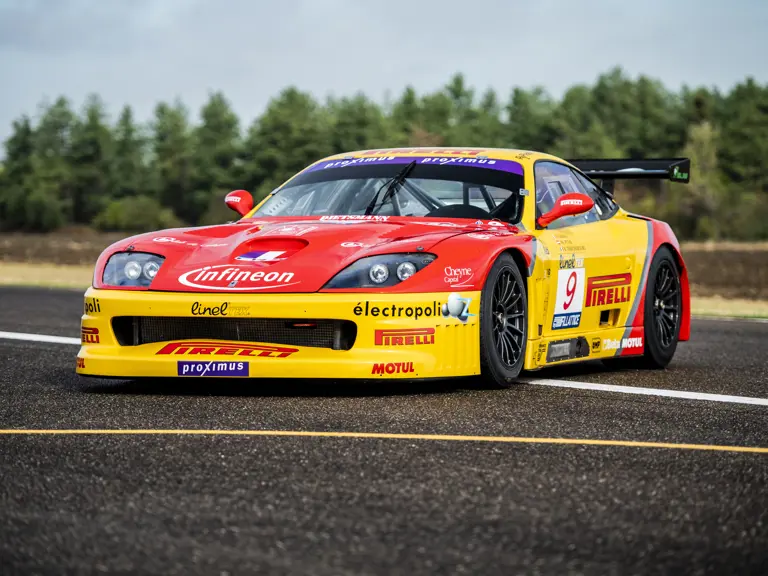
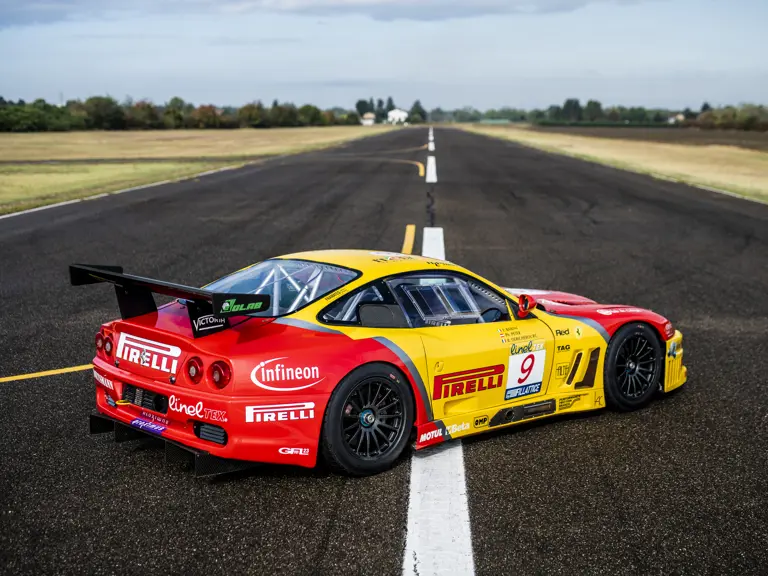
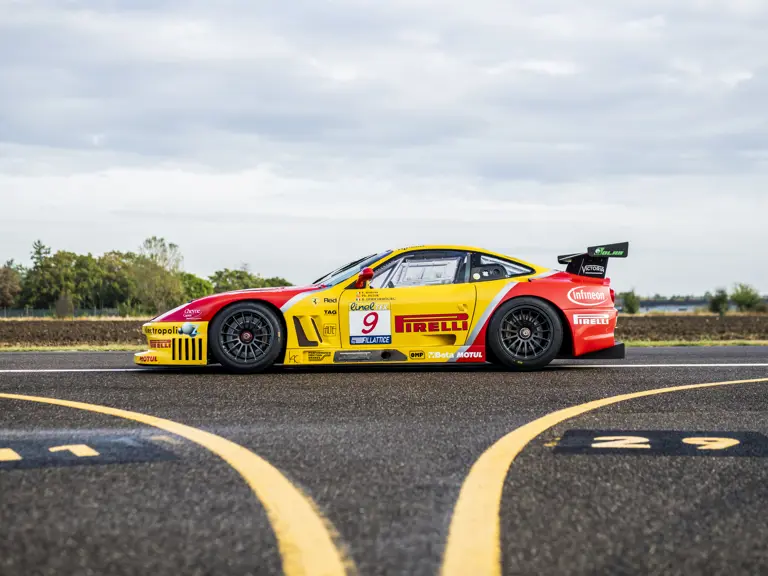
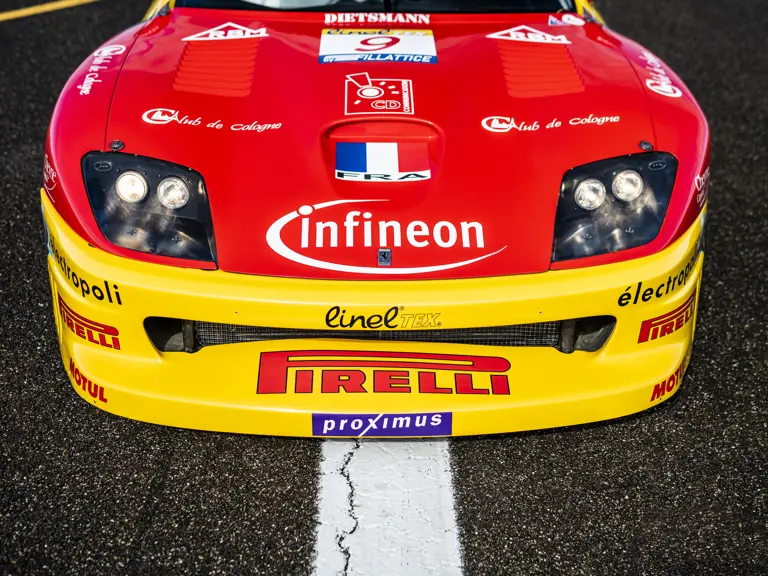
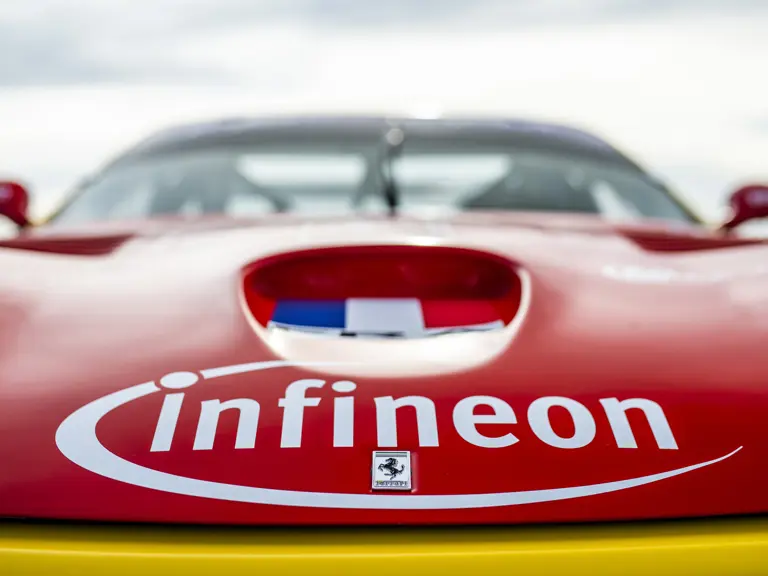
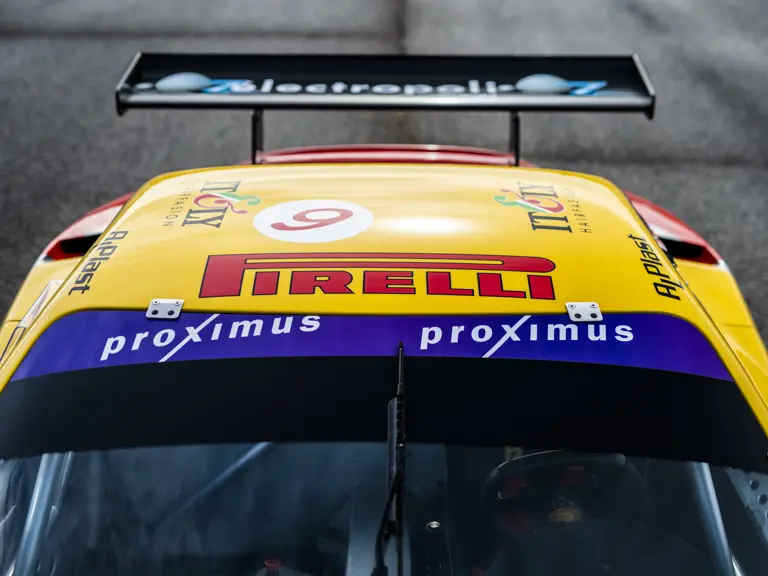
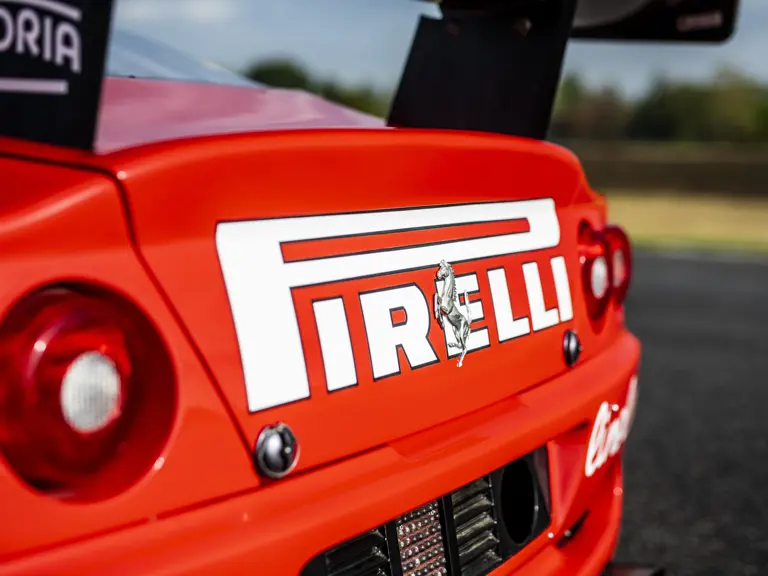

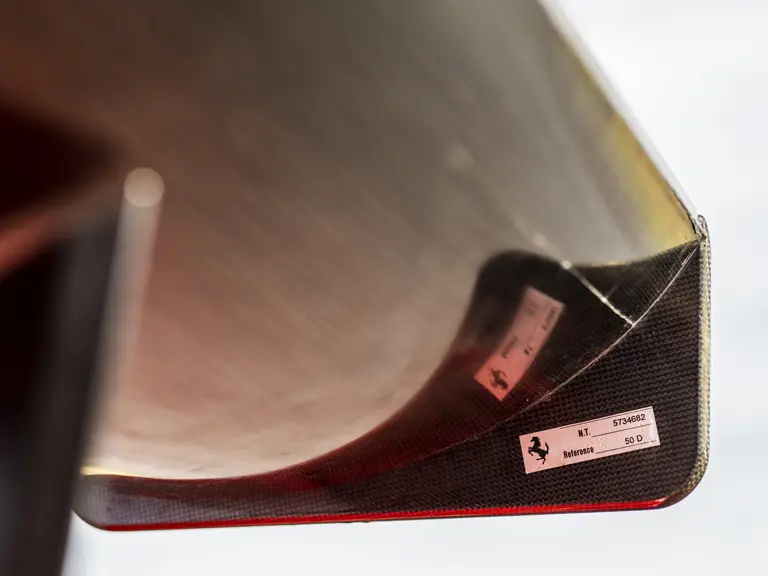
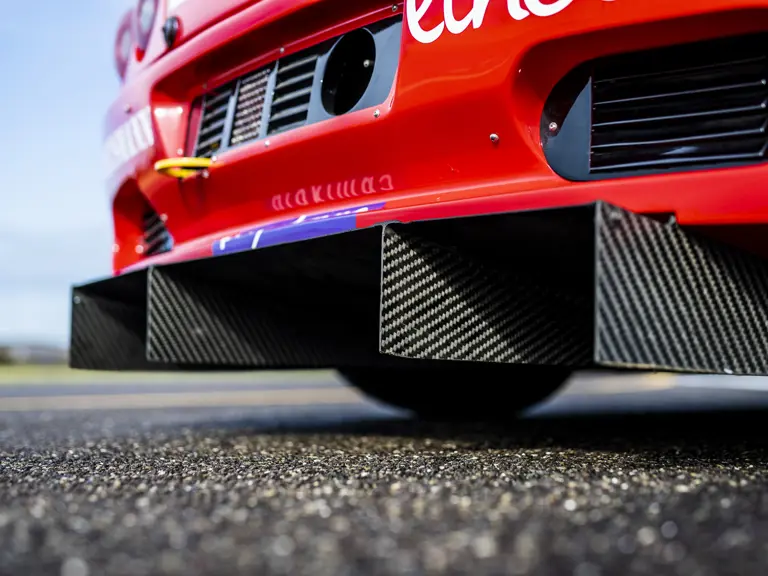
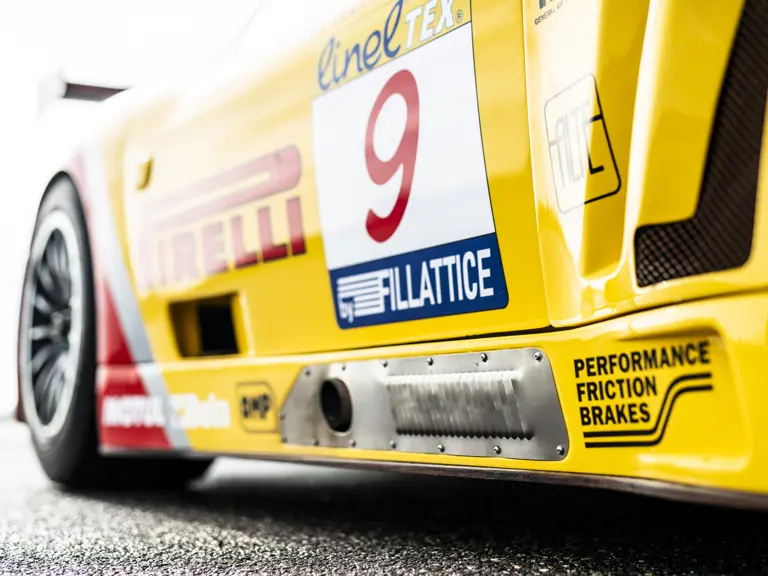
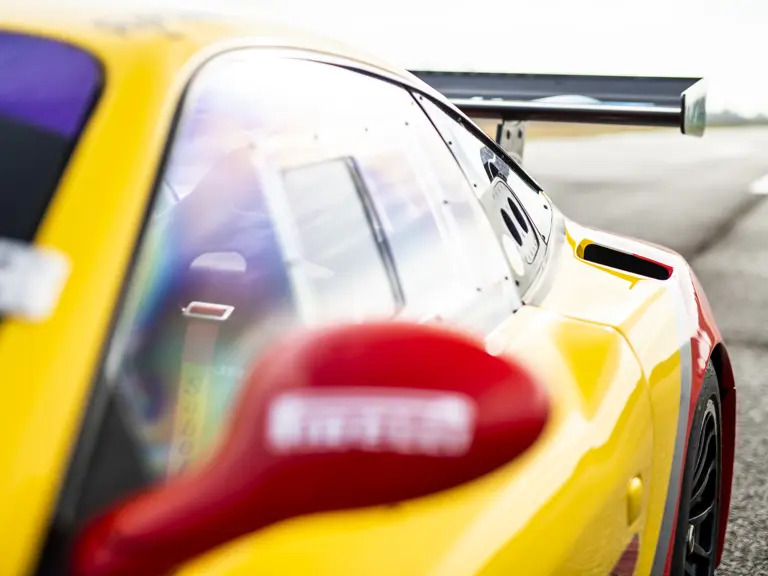
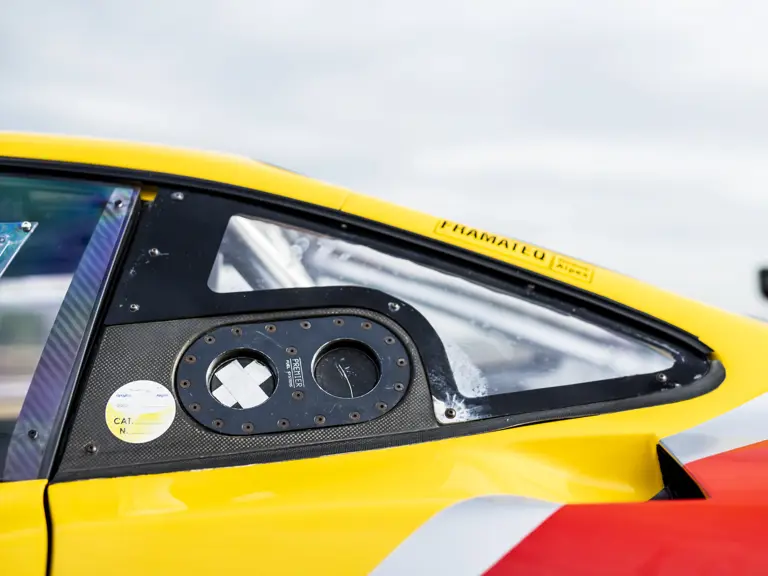


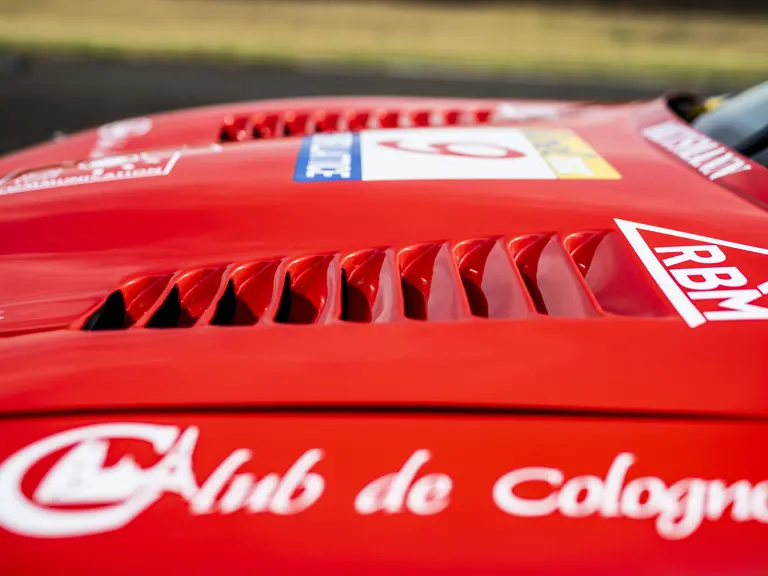


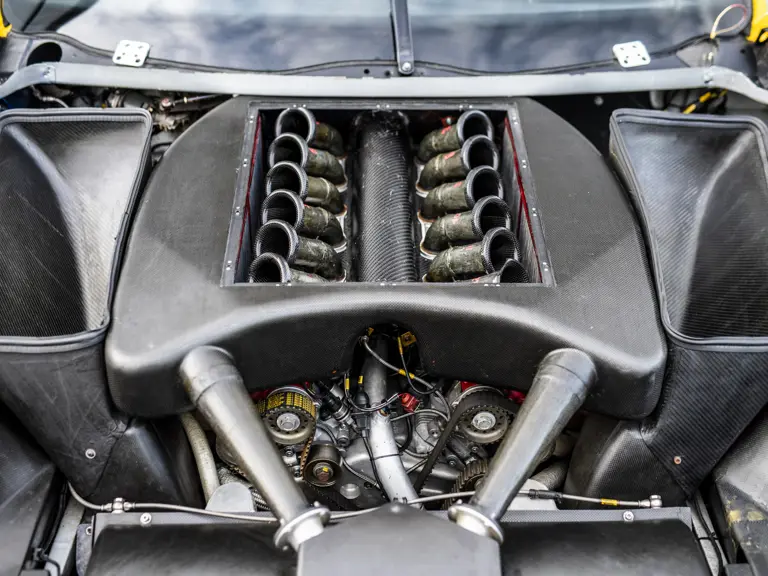
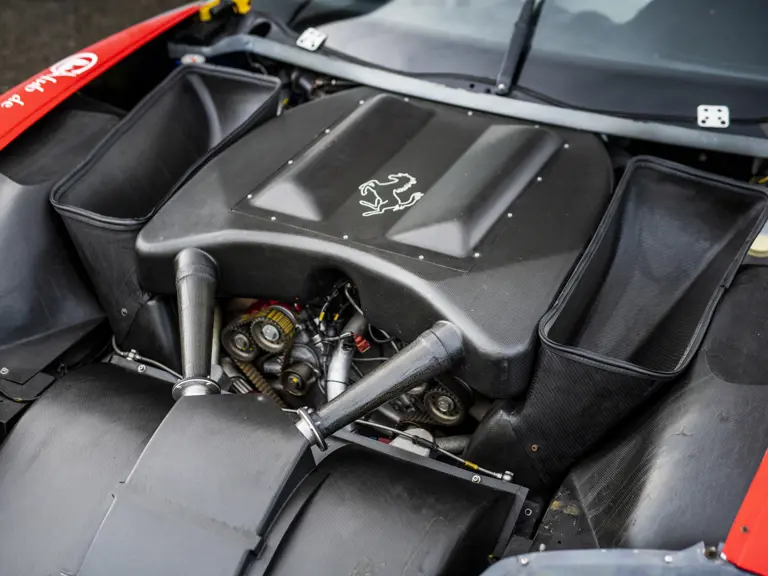
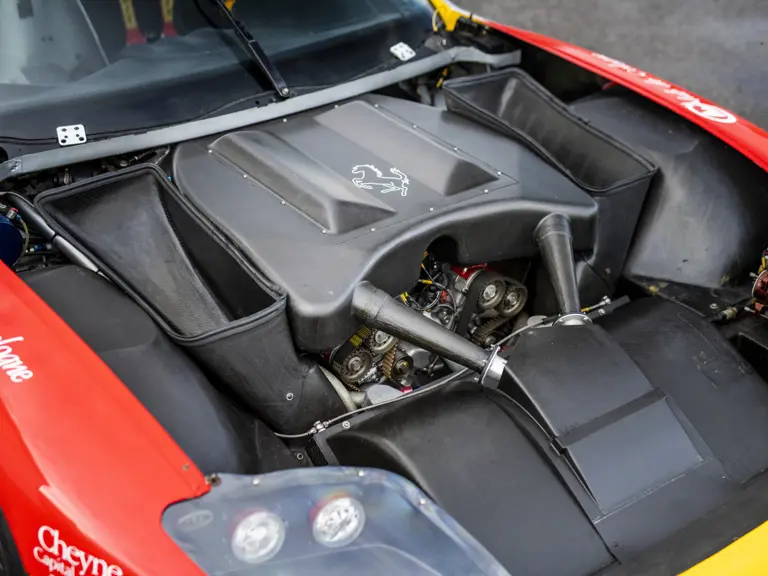
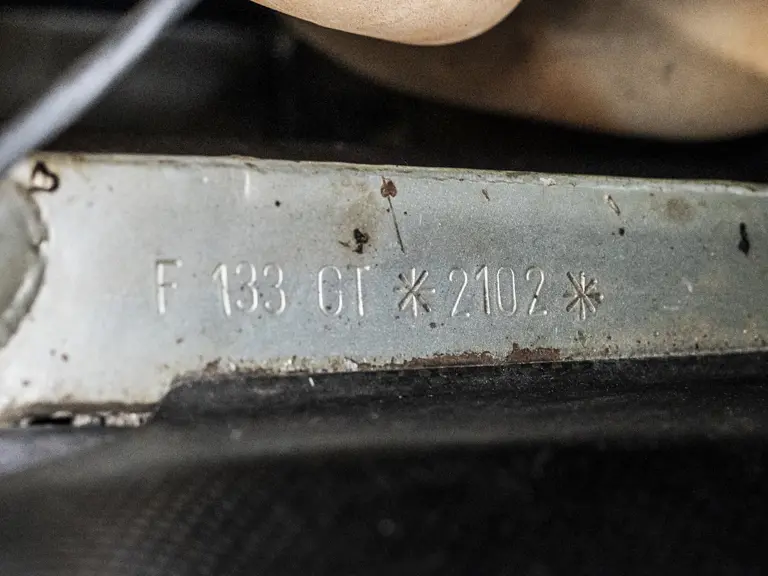

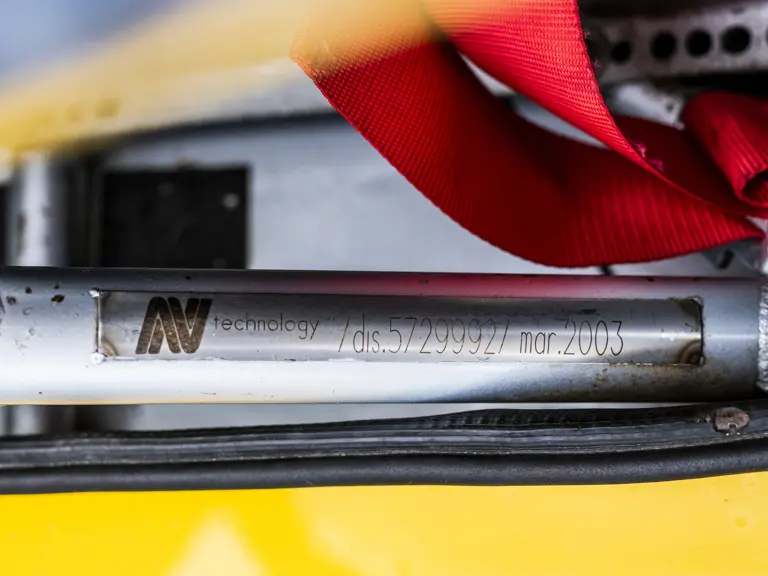
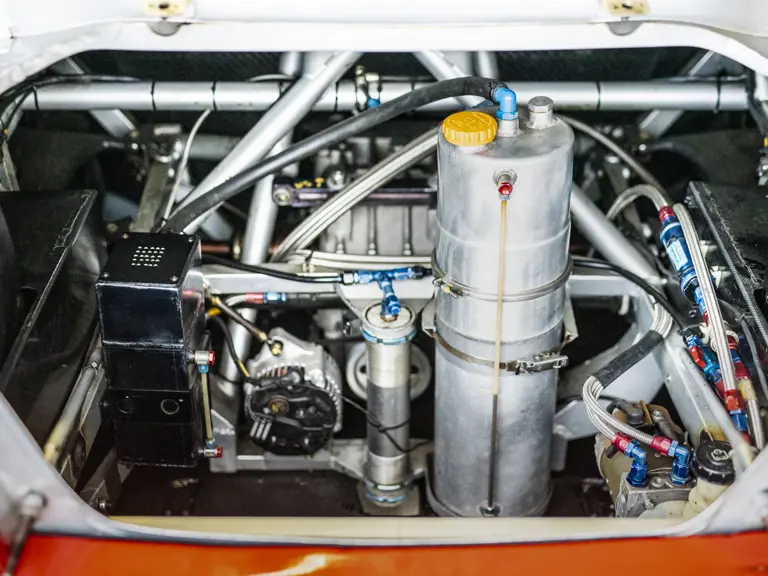

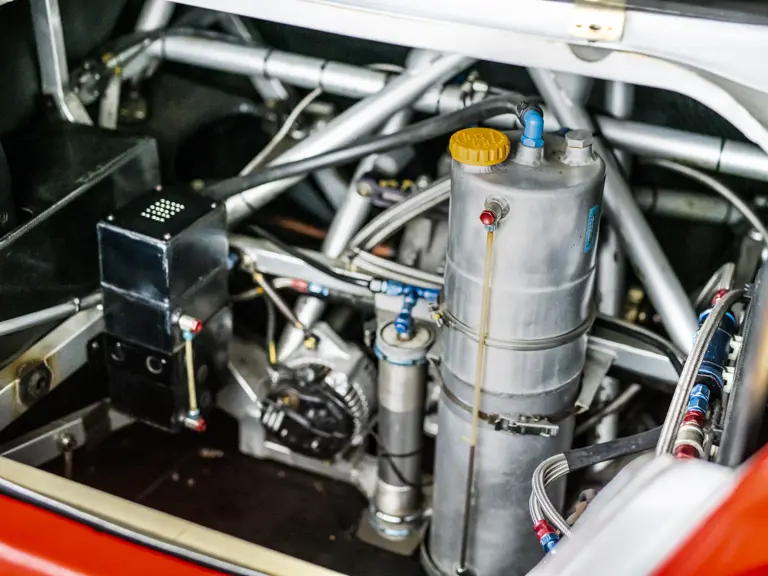
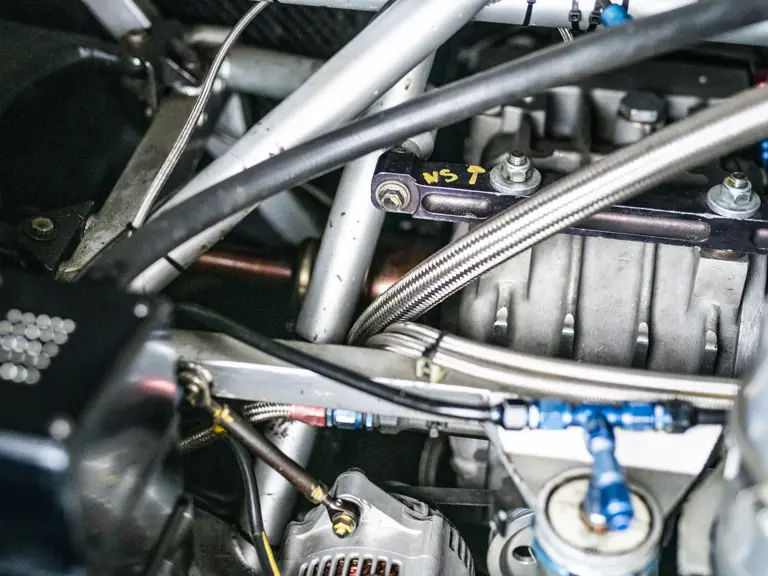
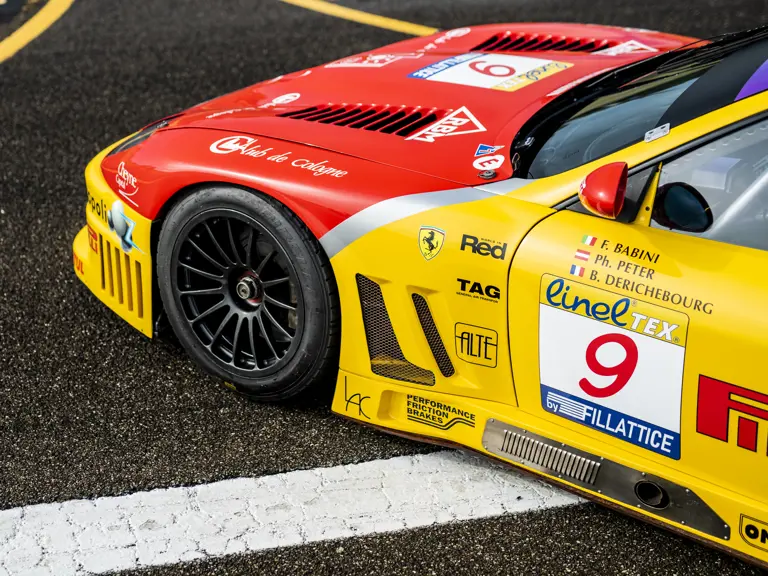
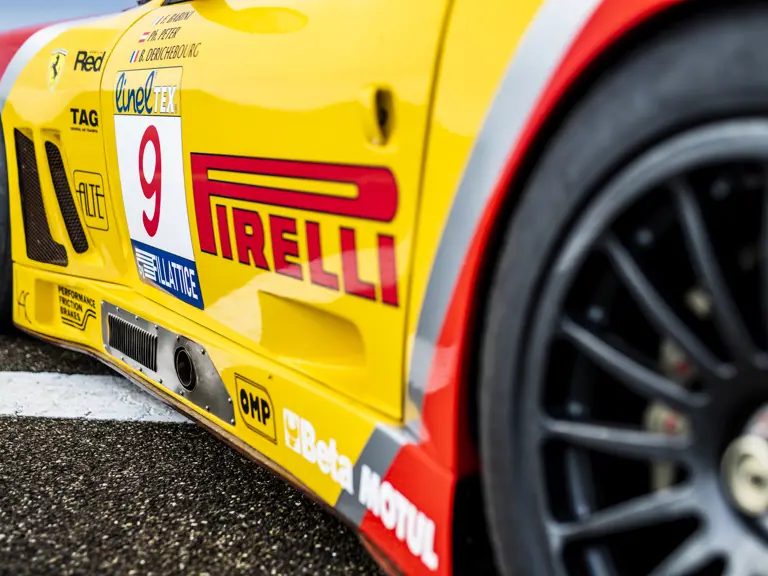
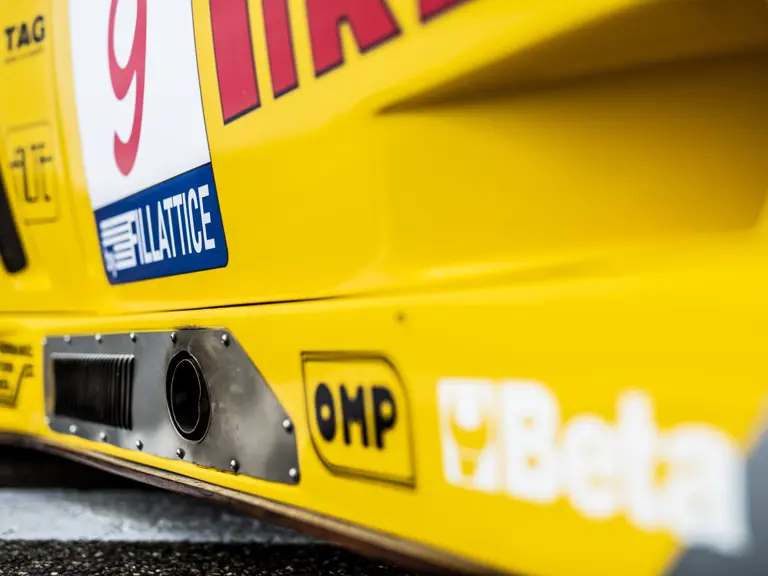
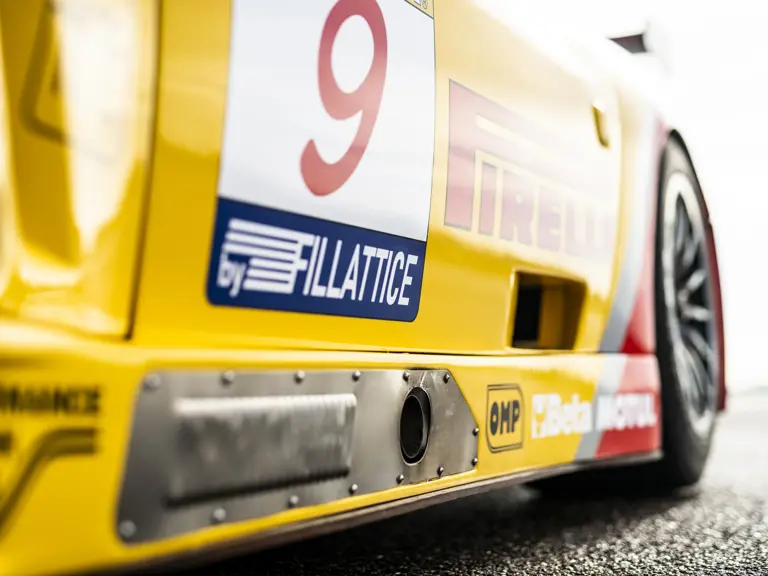
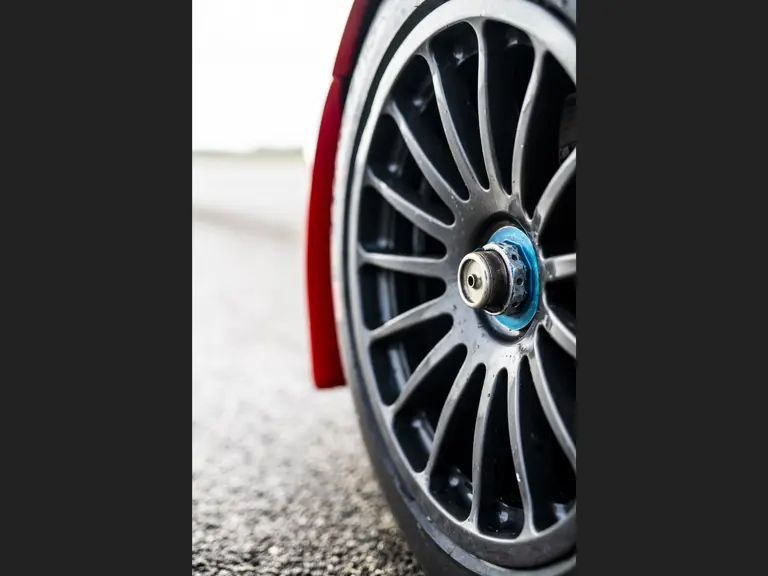

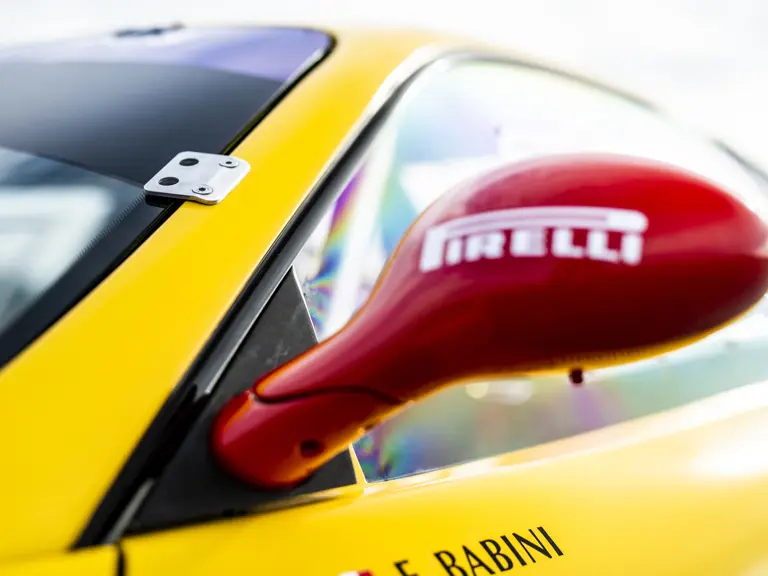
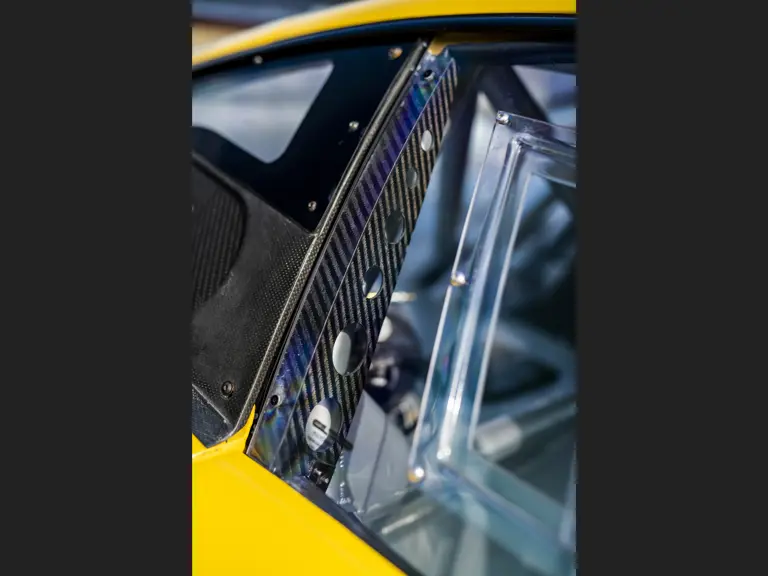
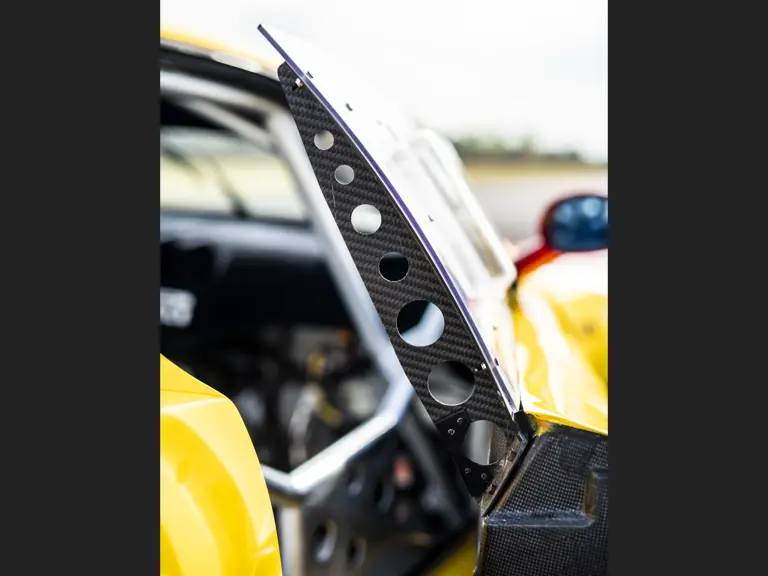
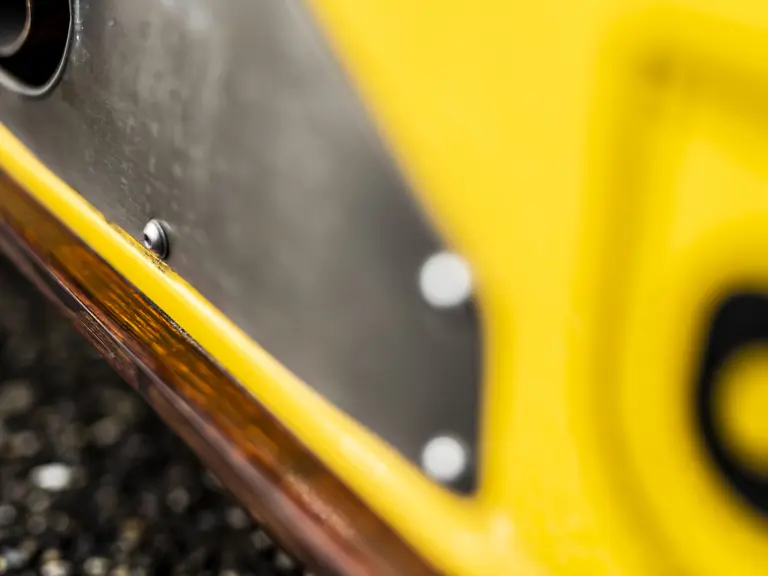
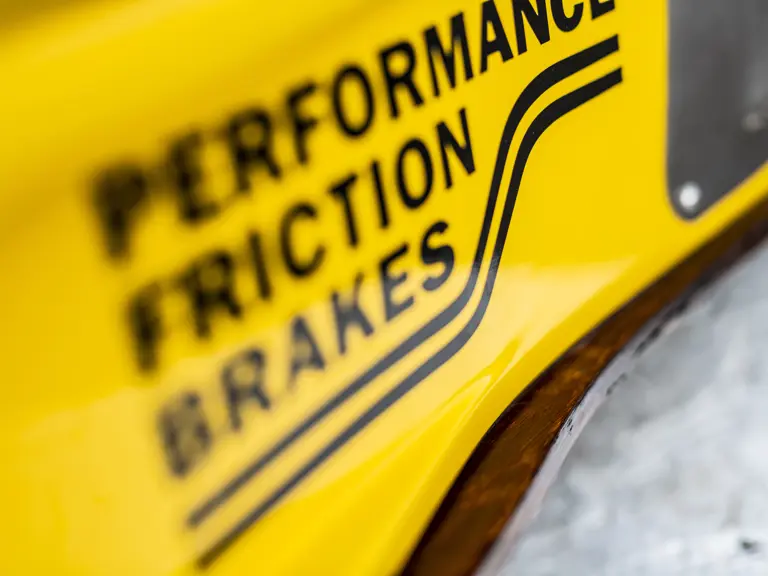
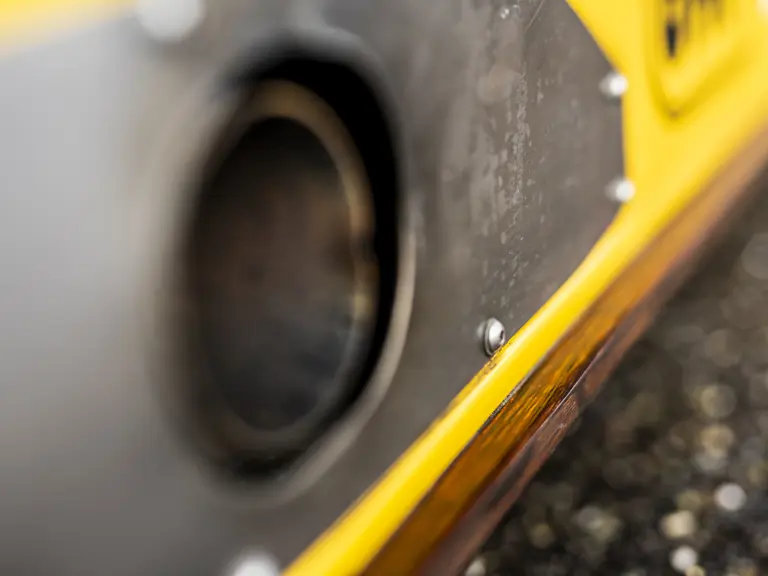
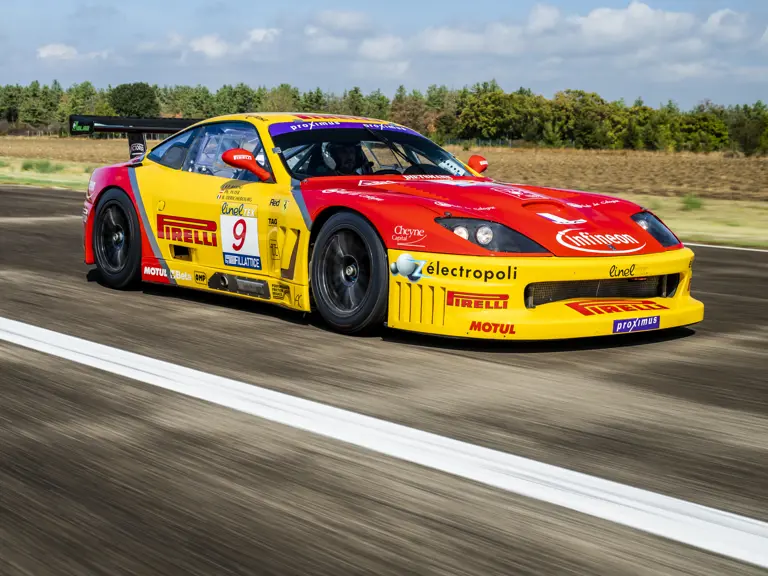
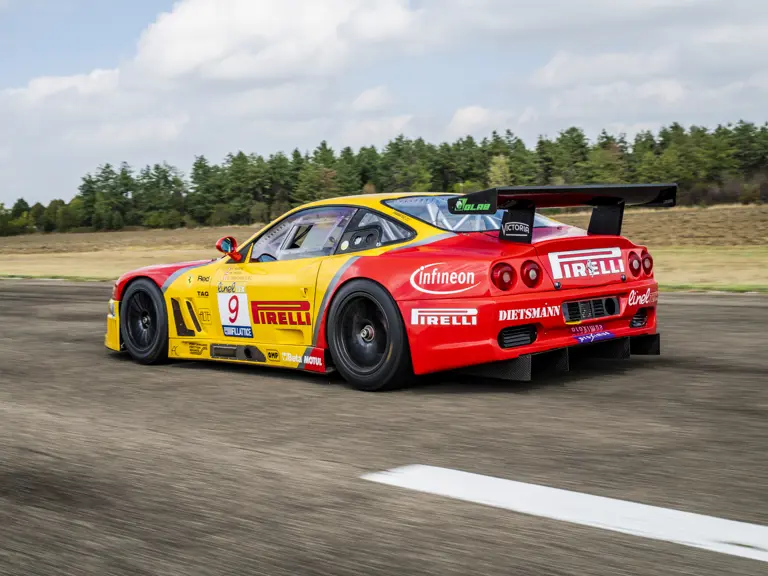
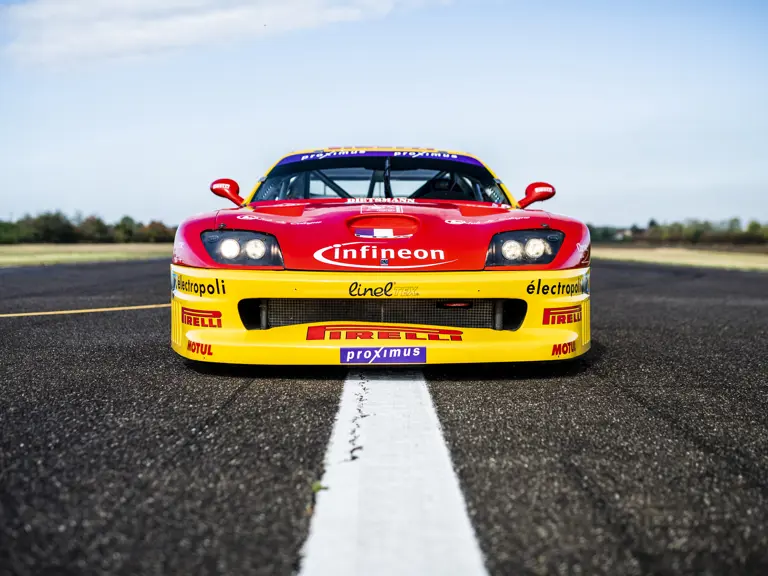
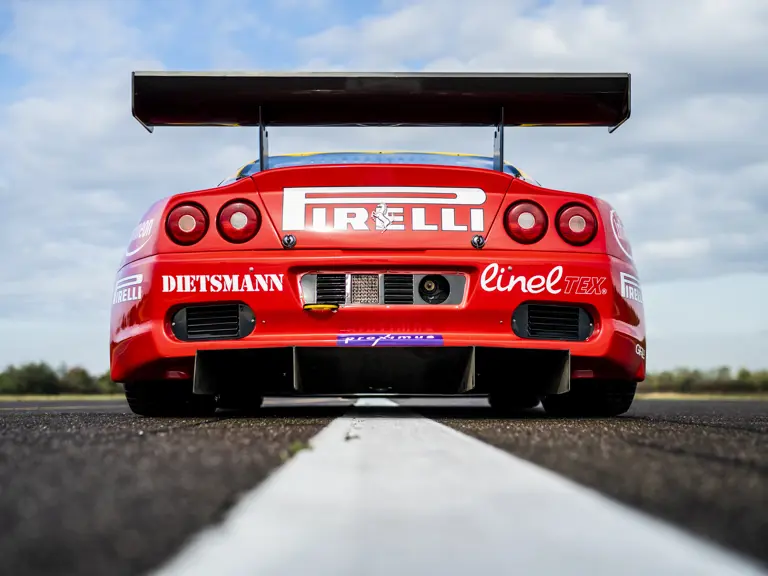

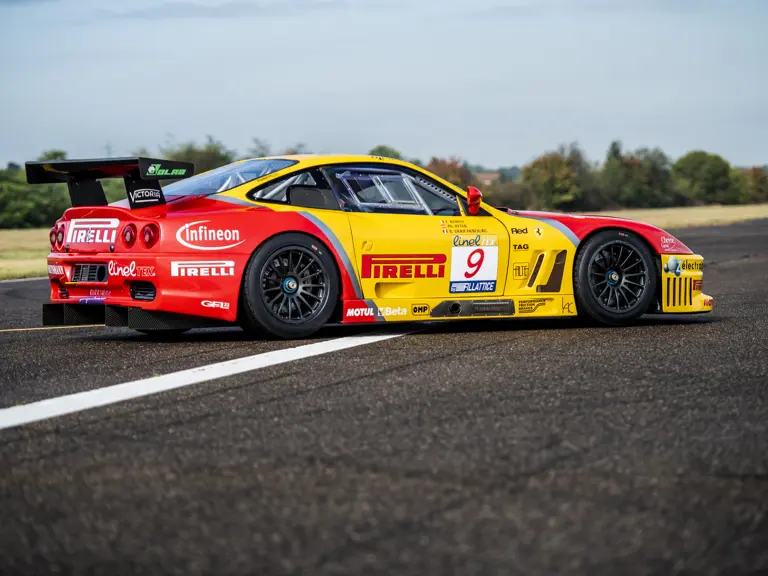
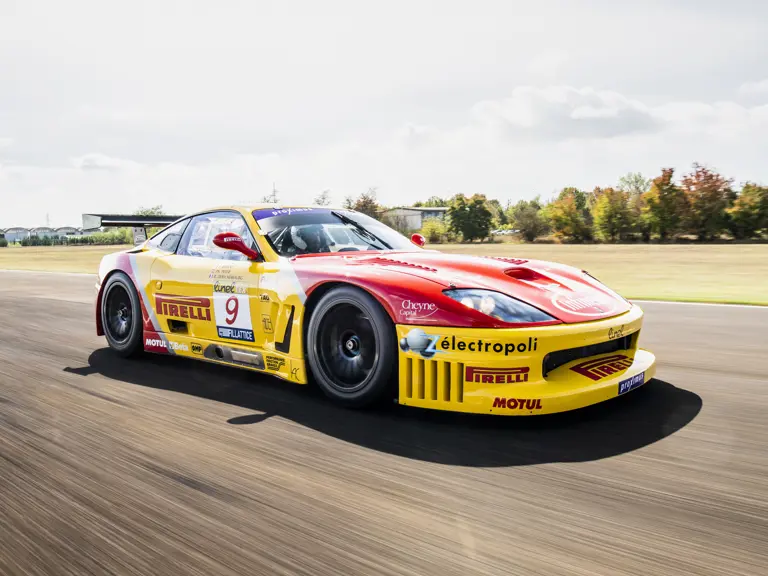
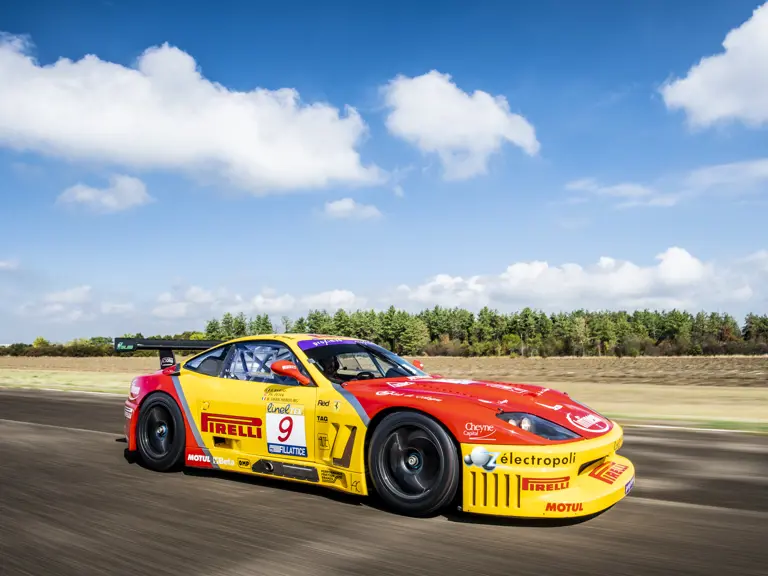
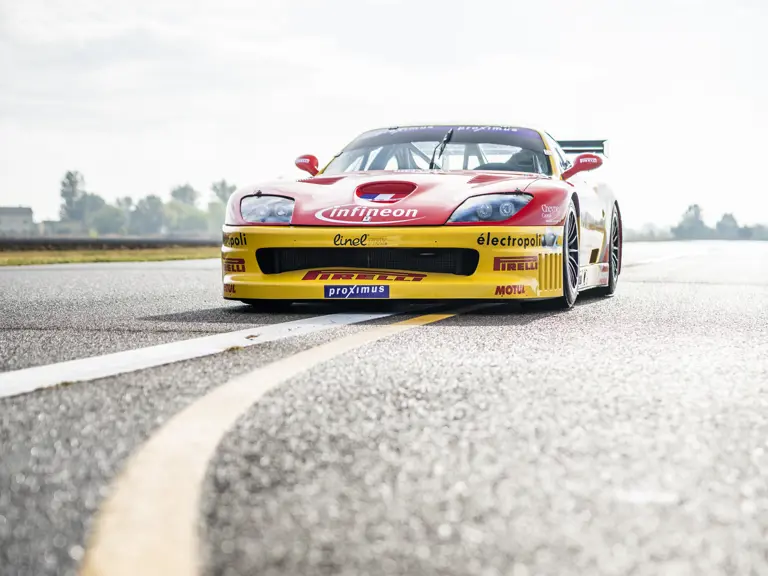
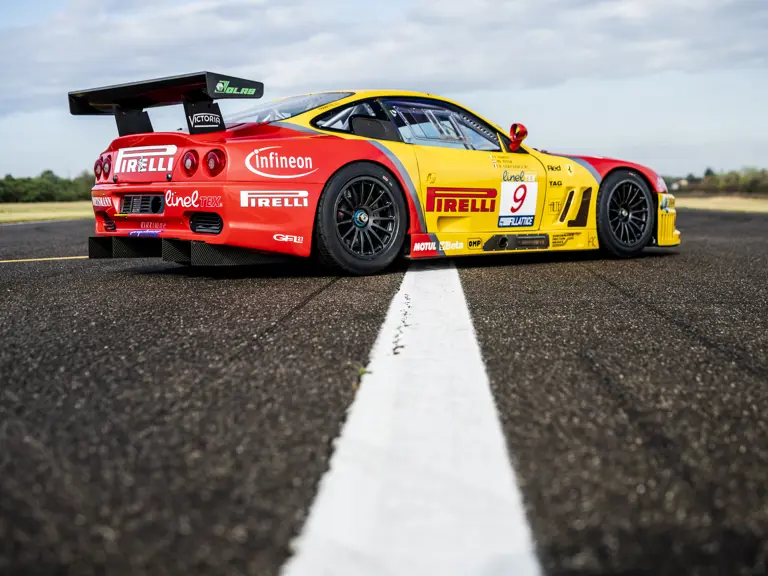
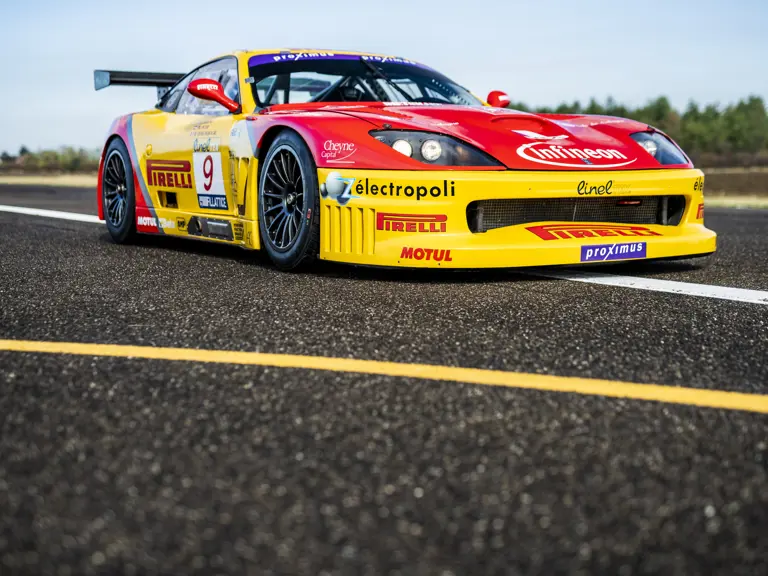
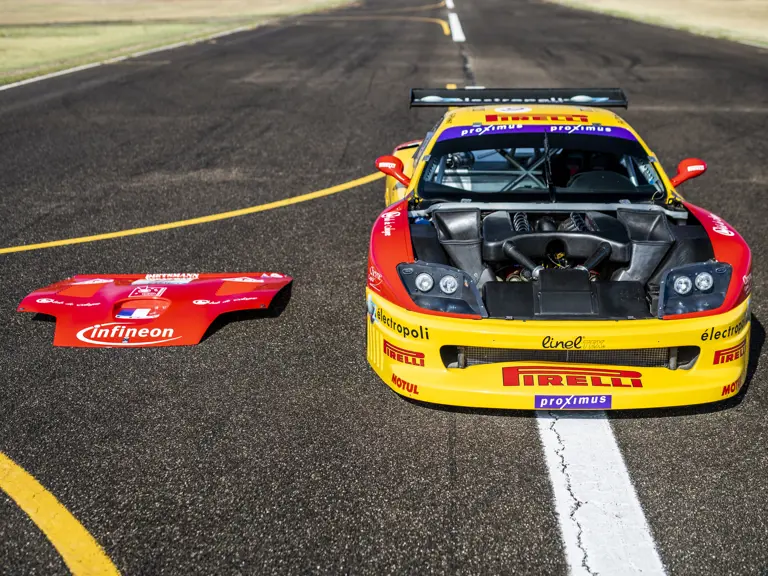
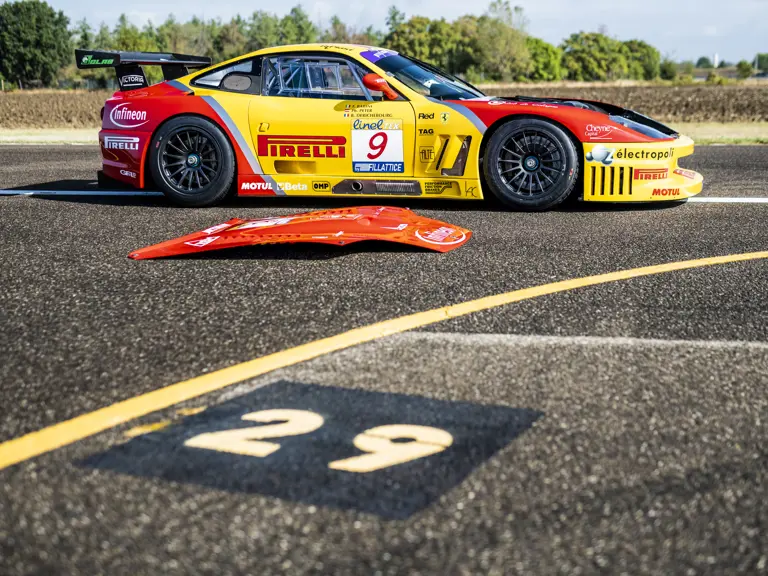
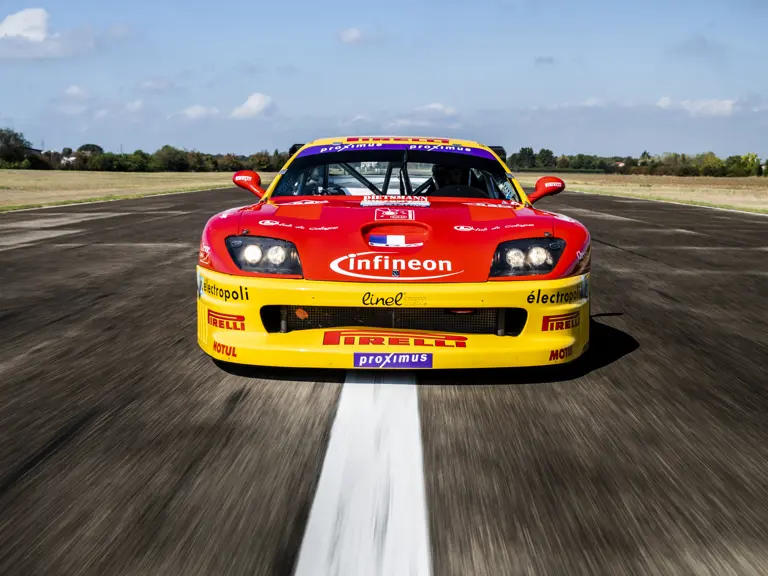
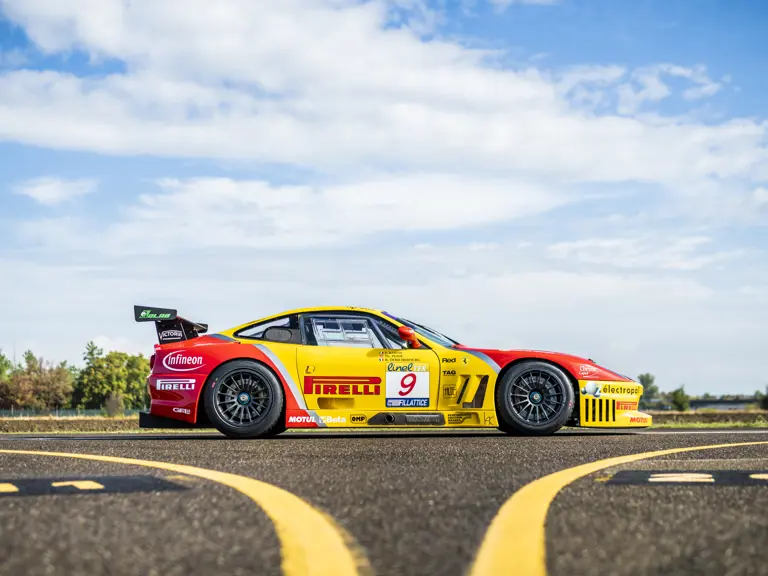
 | Paris, France
| Paris, France
